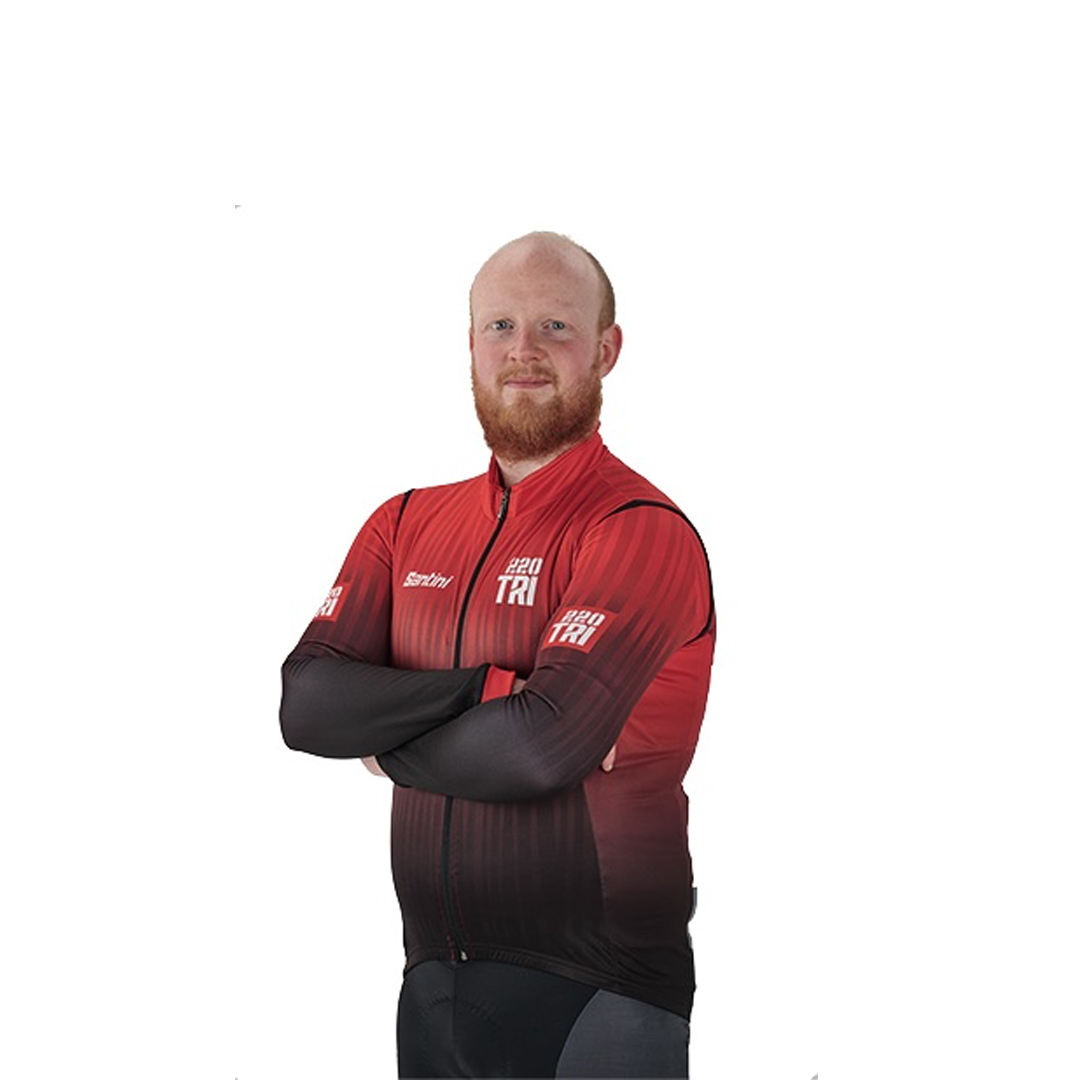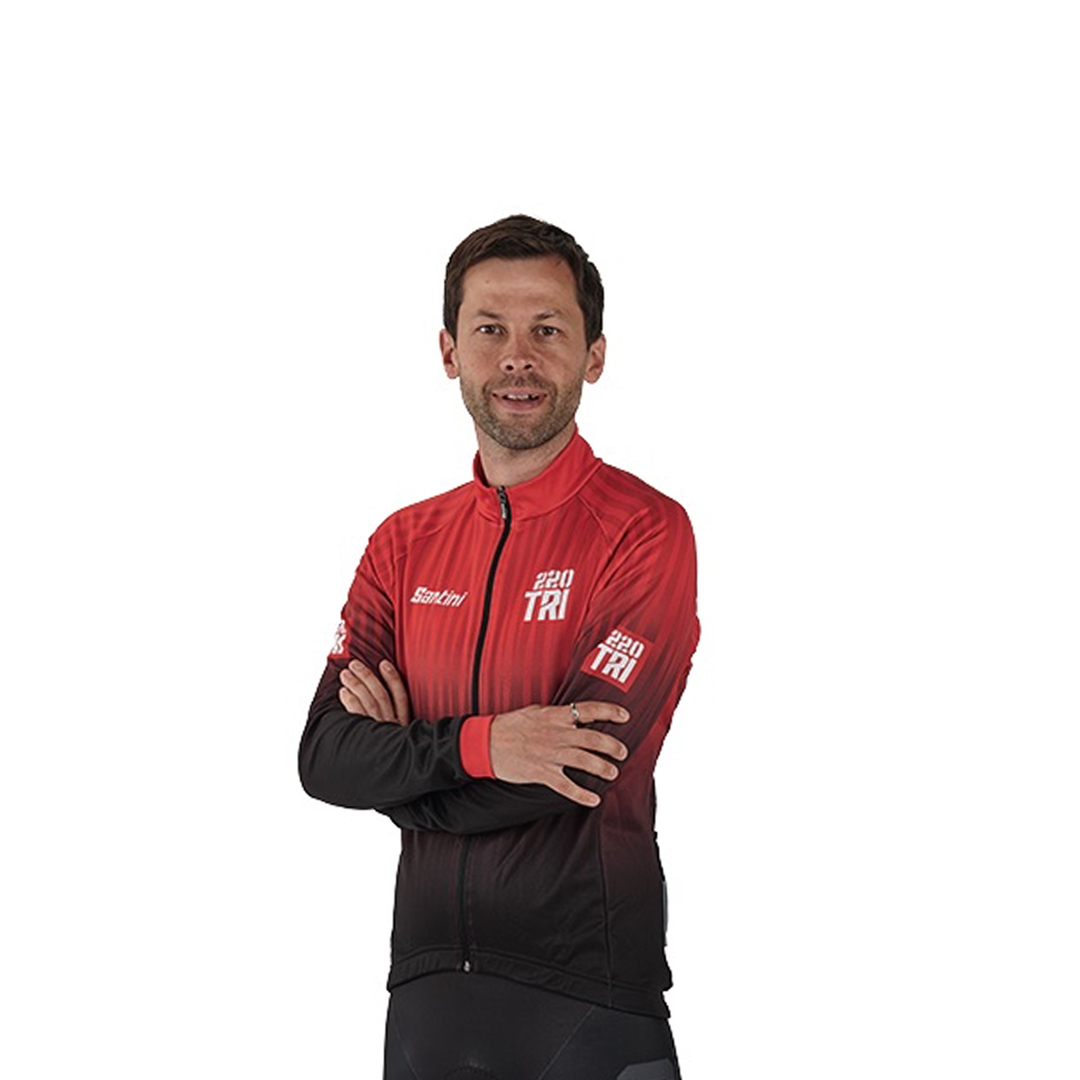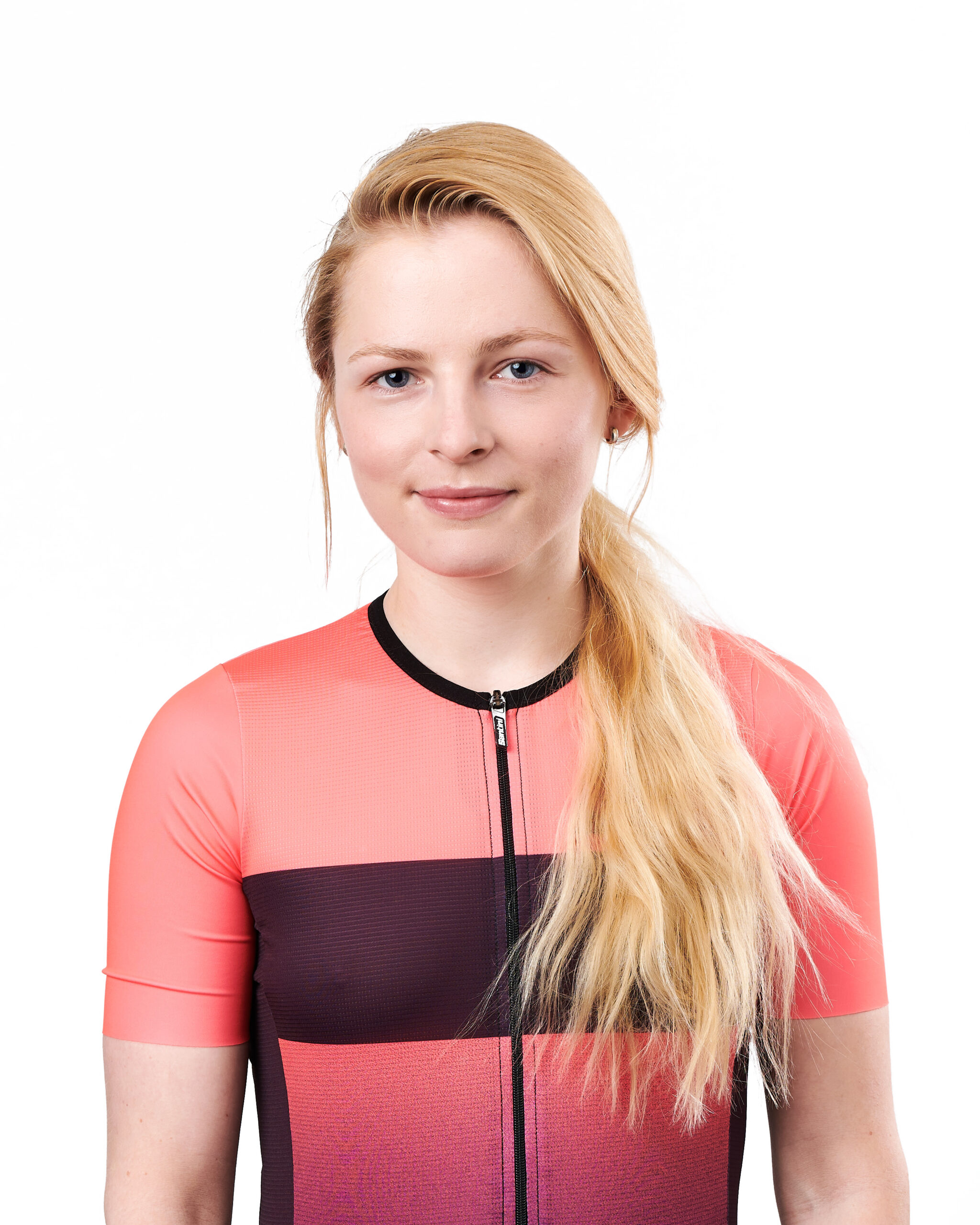The triathlon wetsuit is one of triathlon’s big ticket items and one of the most crucial triathlon buys you’ll ever make. To help you make that purchase, here's our list of the best triathlon wetsuits on the market today.
Alternatively, if you're new to the sport, or don't want to spend so much money, take a look at our list of the best cheap triathlon wetsuits.
Best triathlon wetsuit reviews
Jump to...
- Best mid-range triathlon wetsuits reviewed
- Best top-end triathlon wetsuits reviewed
- The best kids wetsuits on sale
What to look for when buying a triathlon wetsuit?
The fit of your triathlon wetsuit is paramount. The wetsuit needs to be snug rather than loose. However if it's too tight, your swimming experience won’t be pleasant and movement could be restricted. if it’s too loose it’ll allow water into the suit, which will seriously slow you down.
You also need to be truthful with yourself about your swim level. If you're a beginner you might need one that will help you maintain your swim position in the water.
The best mid-range triathlon wetsuits reviewed
Zone3 Aspire
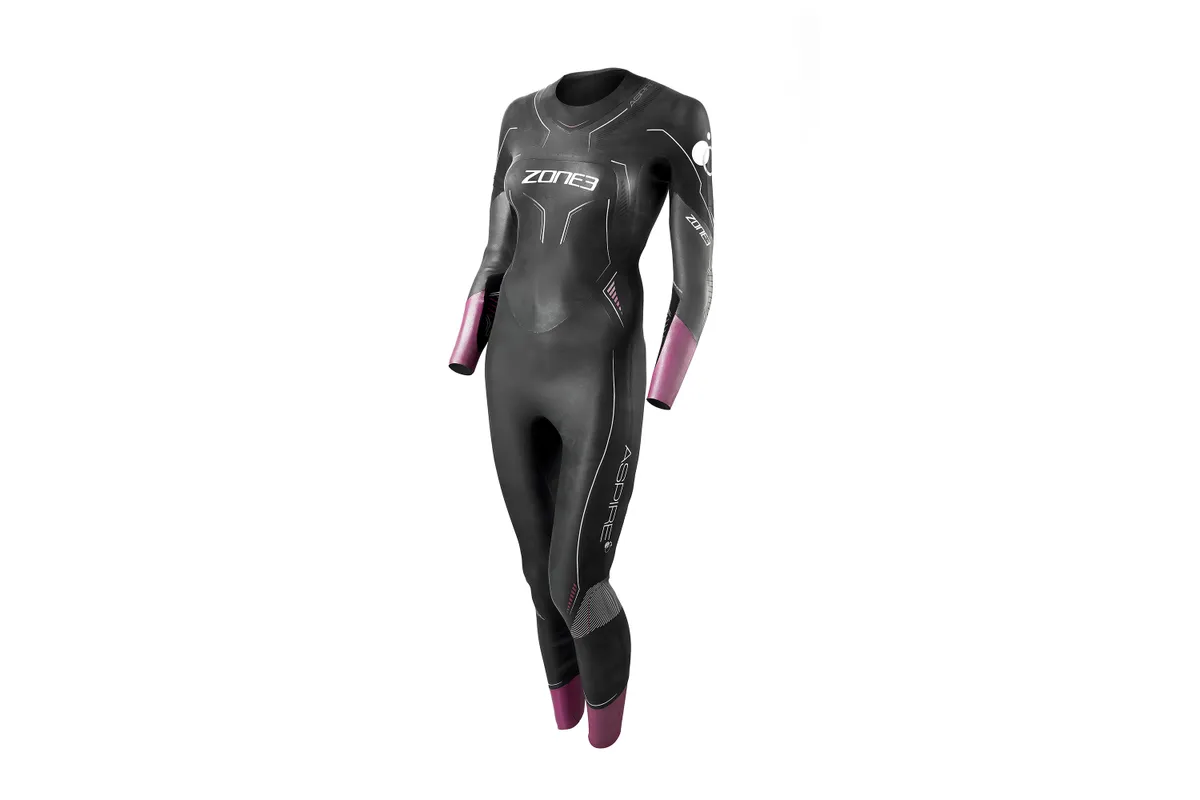
- £449 / $795
We always know when a suit is successful in these tests if it becomes one we automatically reach for swim after swim, even when testing is done – and such was the case with the new Aspire.
Fitting well with none of the water ingress this tester has previously seen in Zone3 suits, this is a really solid, easy-to-use suit.
Offering a nicely-balanced buoyancy profile, including 1mm neoprene across the shoulders, 2mm in the arms and 3mm on the core and legs, this is a suit that gave enough buoyancy in the water to enhance our swimming, but without making us feel restricted or overly-floaty.
The silky-smooth lining made the suit a cinch to pull on – and more importantly remove – while the neckline was comfortable.
Personally, we’re not fans of the girlie pale pink and the price feels a touch high against the Huub, but those are quibbles on a really solid suit.
Verdict: Zone3 have created a real crowd-pleaser here. A great swim and a comfortable experience.
Score: 86%
Orca Athlex Float
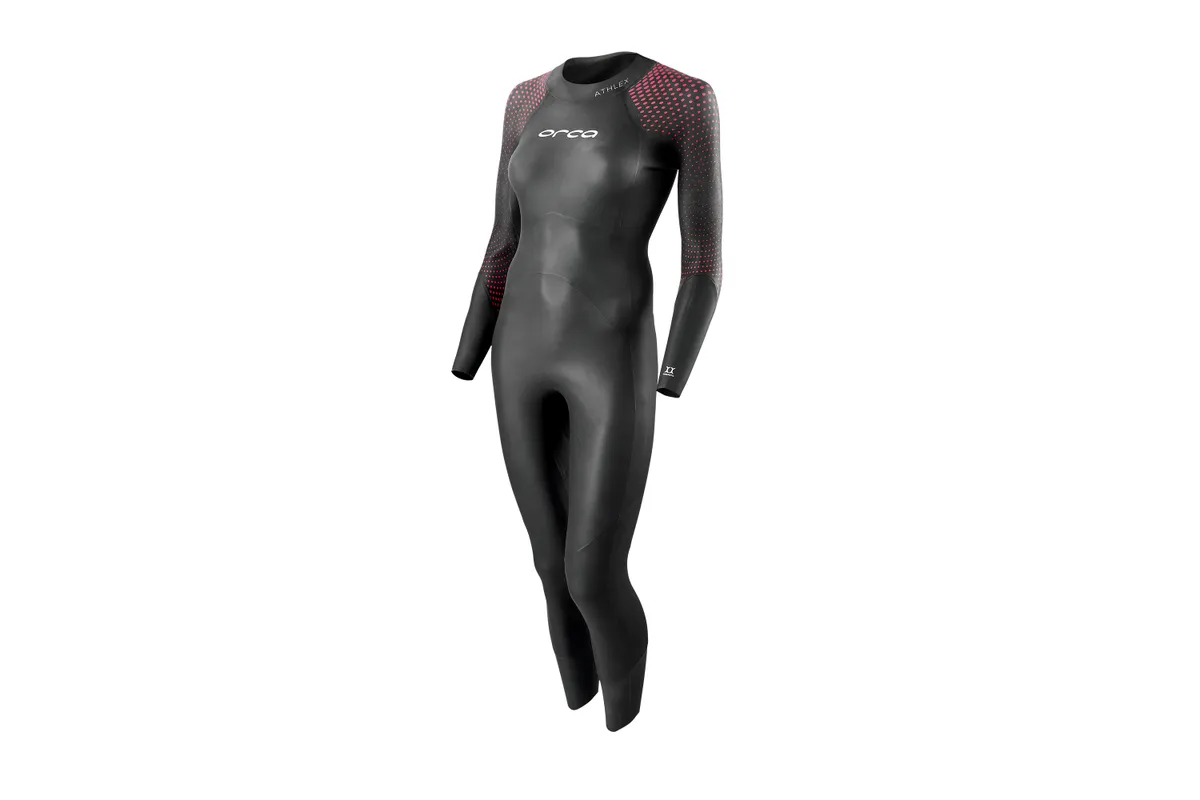
- £209 / $349
The Orca Athlex Float stands out from the crowd due to its high elasticity across the upper body. Made from Yamamoto 39 with extra flexibility built into the material along the arms, shoulders and back, the suit has the best range of movement of any we have experienced on test.
Some swimmers may find the arms a little thin in cold waters, but we had no problem in the British spring and summertime. The only downside is that they’re a bit slower to whip off in T1, though the YKK zipper is quick and easy to use.
We found the low neckline adds to the unrestricted freedom in the water, with Super Composite Skin (SCS) hydrodynamic coating helping us glide through the swim stroke.
There’s plenty of lift in the legs thanks to 4.5mm neoprene leg panels, without it being overly aggressive, and we were still able to kick a little without breaching the surface.
Verdict: Buoyant and flexible for a natural-feeling swim, with heaps of tech for only £200.
Score: 92%
2XU P:2 Propel
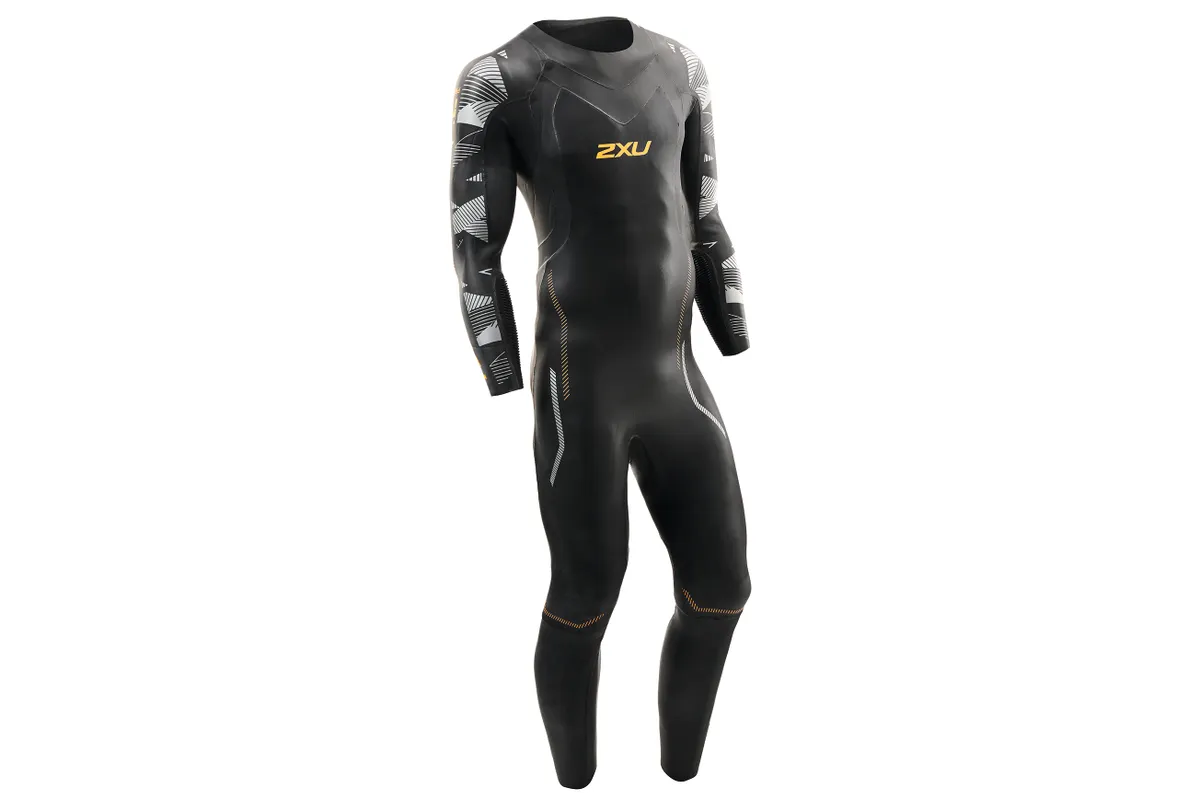
- £380 / $599.99
2XU won our women’s mid-end test with the P:2 in 2020 and it’s easy to see why. The suit is supple, slick and swift, with the 39-cell Yamamoto and Super Composite Skin (SCS) hydrodynamic coating evidence of the high quality.
The 5mm legs and chest, 3mm back and lower legs, and 1.5mm arms are on the money for finding that flexibility:buoyancy ratio sweetspot, aiding one of the most natural-feeling suits here.
Despite sounding like a pre-teen’s birthday party drink, the ‘orange fizz’ design’s striking and construction quality is high. Where we struggle is with the wrist’s catch panels, sorry, Embossed Concave Water Entrapment Zone.
This tech was all the rage back in 2013, but 2XU are persisting with rigid panels on the forearms, and we’ve yet to see any anecdotal or hard evidence that they aid propulsion during the catch phase of the stroke.
Verdict: Smooth as an eel, but we need evidence that those catch panels aid propulsion.
Score: 83%
Yonda Spook
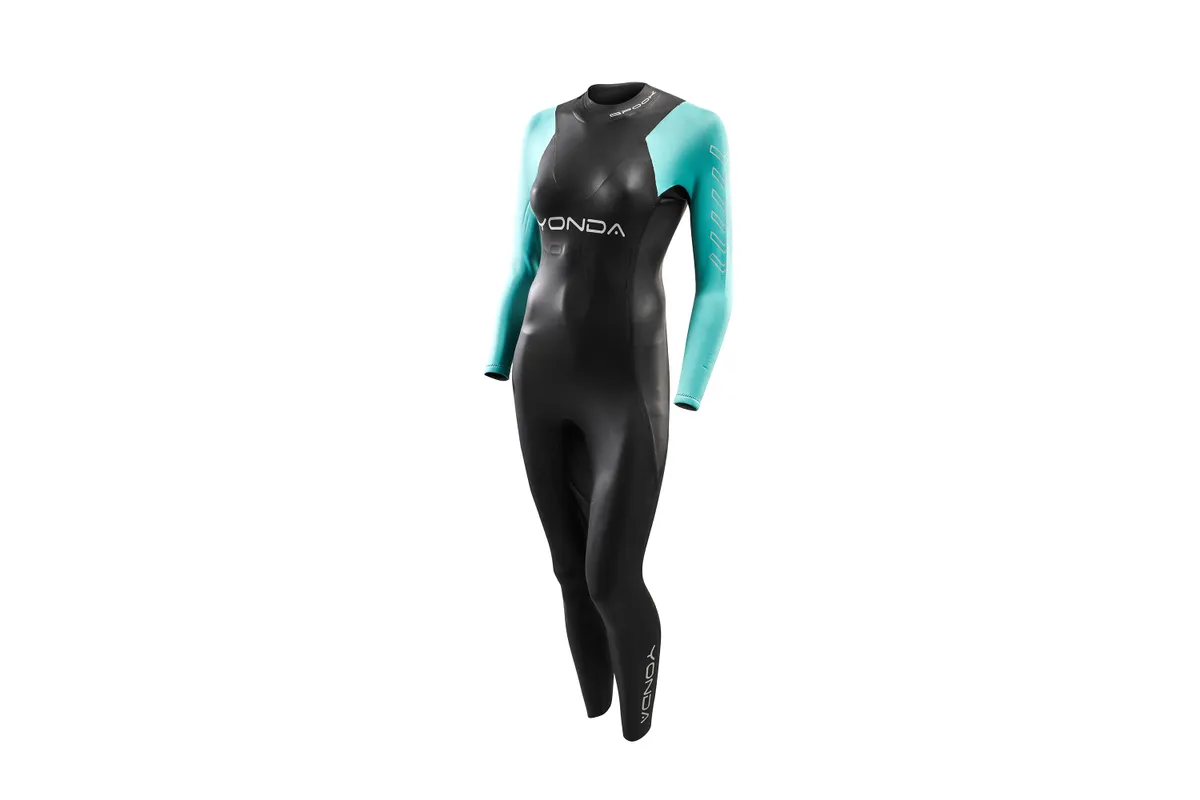
- £269 / $343
Designed as an entry-level suit to encourage first-timers to enjoy outdoor swimming in safety, the Yonda Spook is the most expensive suit in this budget test, but it comes with a high-quality build to match.
As graduated Yamamoto neoprene is cleverly placed to enable swimmers to do both front crawl and breaststroke in the water, we felt lifted and unrestricted through all the strokes we tried.
A big safety tick for us is the fluro blue arms, making us visible in all conditions and feeling safer in wild swim spots, though the 1.5mm LSQ Green Nano jersey-like material may not be warm enough for winter dips.
The standard 3mm core and 2mm Yamamoto 38 cell skin legs aren’t the thickest on test, but provided enough lift for our tester. Like the Van Rysel SD suit, we found that some kick is needed in order to remain in a streamlined position in the water.
Verdict: Most visible on test, with good-quality build, plus compatible with any swim stroke.
Score: 88%
Huub Aegis X 3:3
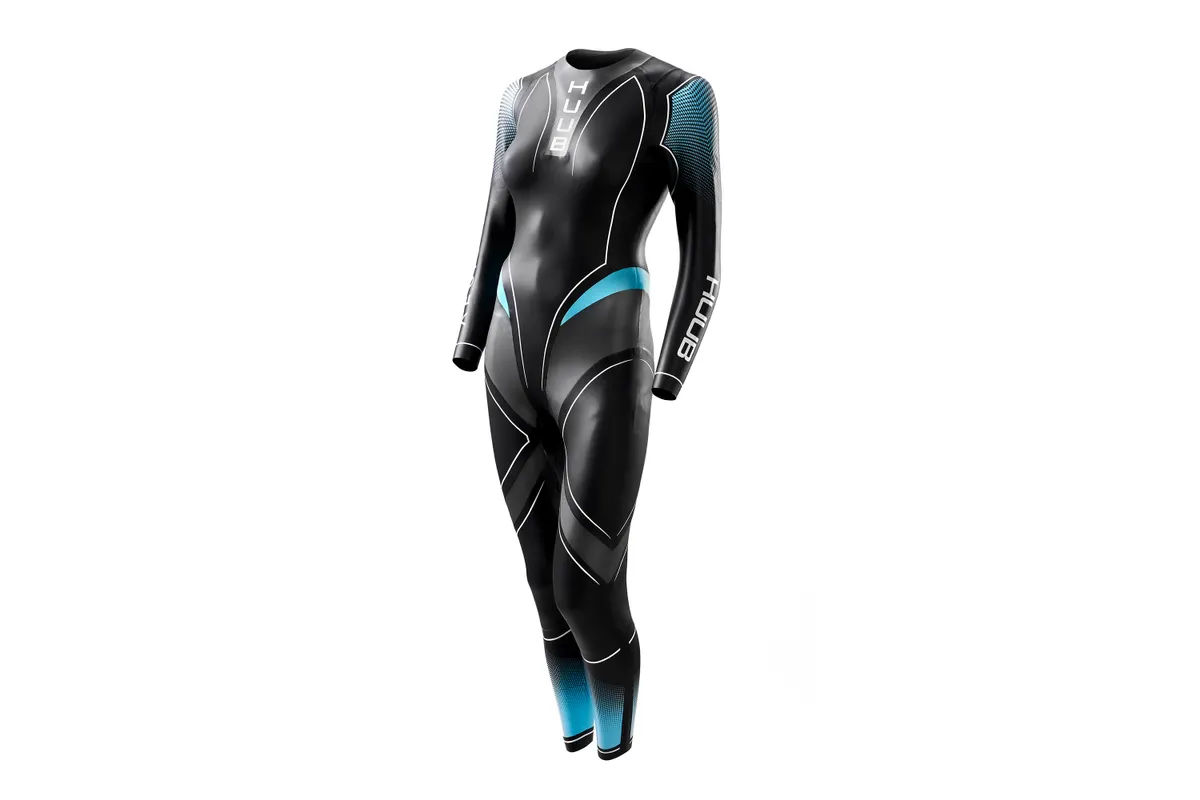
- £399.99 / $589.99
Huub describes the Aegis X as a facelifted version of one of their most popular suits, and having swum in many from the brand over the years, we appreciated the retention of the X-O Skeleton design, which gives great fit and body position in the water.
This tester also loved the stretchy blue panels on the hips, which meant a curvier figure could easily get a good fit around the lower body.
We’ve previously loved racing in a 3:3 women’s Huub suit (the Atana, no longer available) and the Aegis X gives a similar flexible, yet supportive feel with a silky lining offering a quick and comfortable experience getting it on and off.
In the water we felt supported and buoyant, but not too high. We would have liked a tiny bit more stretch on the shoulders for longer swims, but it’s a minor comment on a great suit that we’d happily reach for all year round.
Verdict: Great suit at a decent price with some good tech - plus it looks great and feels good in the water.
Score: 88%
Blueseventy Reaction
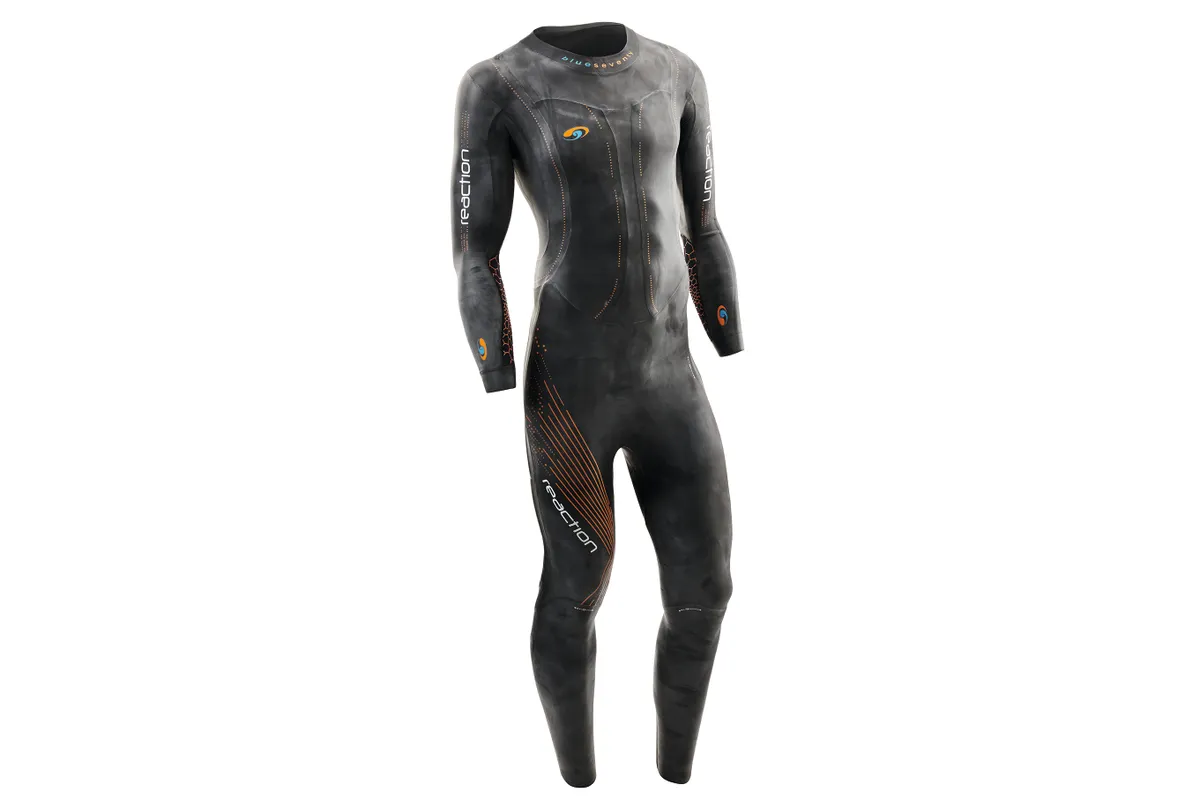
- £449 / $600
Blueseventy’s profile may have dropped since its peak a decade ago on the backs of the Brownlees, but the brand still makes formidable wetsuits. This latest Reaction goes for the ‘if it ain’t broke’ approach, as the changes from the 2017 version are largely aesthetic.
The 4mm and 5mm sections in the chest and legs supply a noticeable level of buoyancy and warmth, and the ‘V02’ chest panels genuinely seem to aid the breathing process. The 1.5mm shoulders mirror the top-end Felix and offer plenty of extension, while the softer catch panel tech isn’t obtrusive like the 2XU.
On the downside, the plastic webbing on the catch panels was already starting to crack after our first swim, which doesn’t affect performance but disrupts the visuals. It also isn’t the easiest to remove and the neck is the tightest on test, though this does limit water ingress.
Verdict: Still a fine suit, but diminishing returns from the 2017 version.
Score: 80%
Aqua Sphere Racer V3
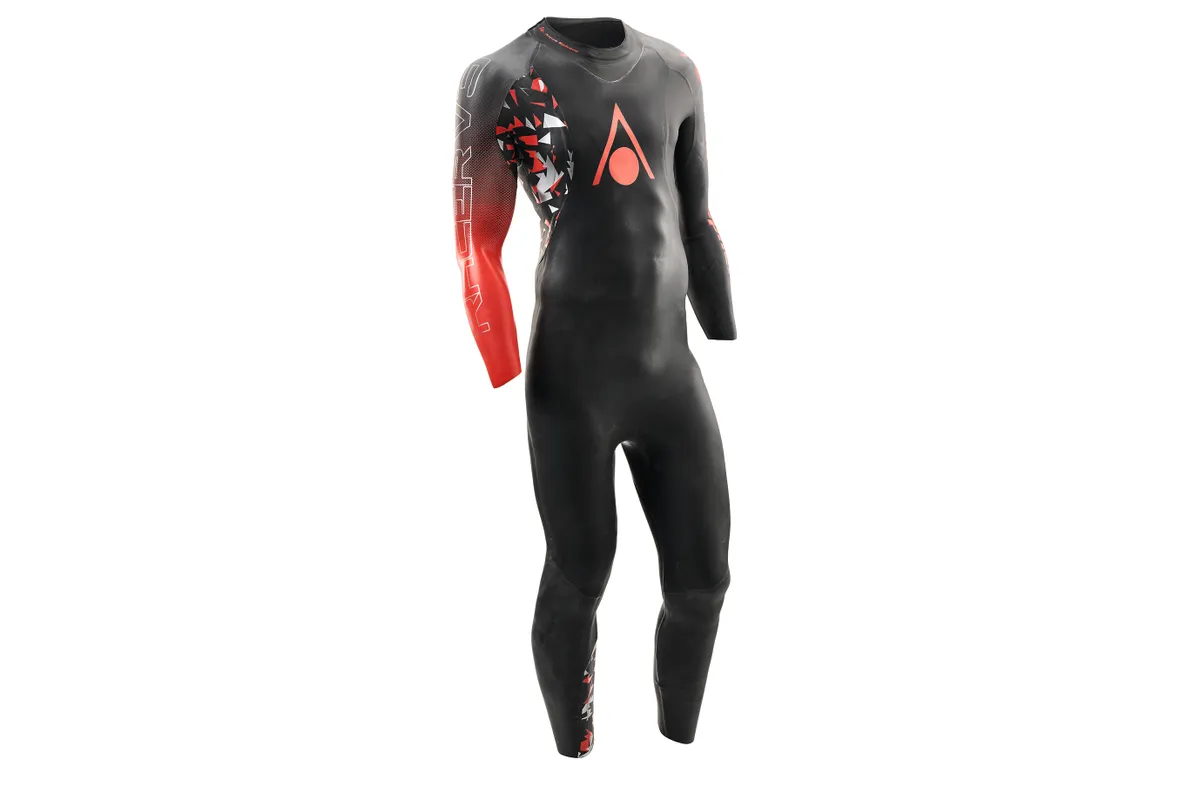
- £558 / $549.99
Sometimes you get what you pay for, and that’s the case with the Racer V3, as it instantly feels more supple and classier than anything on test.
The top tech includes 40-cell Yamamoto, SCS coating for hydrodynamics and ultra-thin 1.5mm upper panels, which provide the best flexibility of the men’s mid-range suits.
The single red arm sleeve is a bit Michael Jackson in Thriller, but it’ll get you spotted among the mass of noir in the swim and it adds to a design that we think is the best here.
Elsewhere, the 4mm and 5mm combination of neoprene thickness in the core and back provide a high but not excessive level of buoyancy, while the quick-release angle tabs made it the swiftest to remove here. We did regularly have trouble getting the zip up by ourselves, but it’s hard to find fault elsewhere.
Verdict: Superior performance, striking visuals and top-end tech with supple neoprene.
Score: 90%
Roka Maverick Comp II Sleeveless
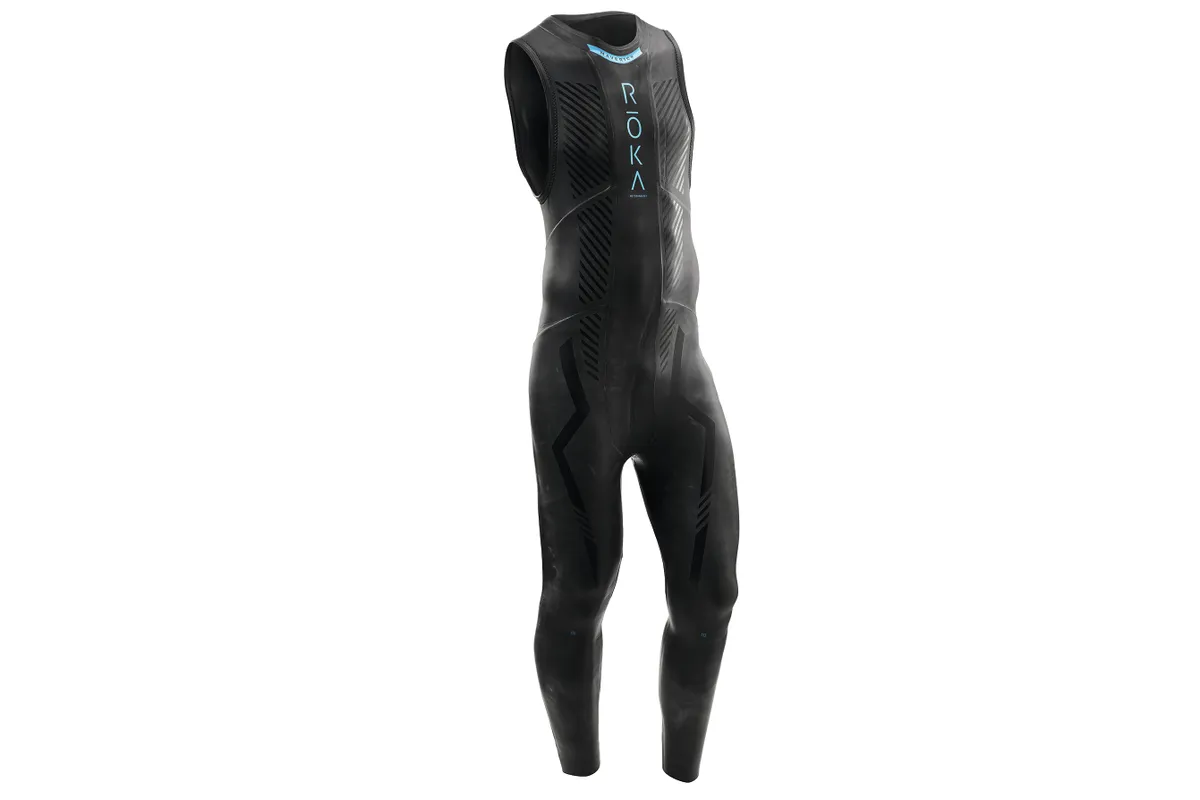
- £265 / $225
The standard sleeved Comp II has scooped awards in previous years, but the lesser-spotted sleeveless wetsuit version?
Much of our acclaim for the sleeved Comp II is Roka’s Arms-Up tech, which produces a huge amount of unrestricted upper-body mobility, largely negating the need for the sleeveless version.
An armless suit also presents greater water ingress if the fit isn’t precise, and the SCS coating on a suit’s arms is more hydrodynamic than skin, so you won’t gain any speed.
For positives, the suit was fast to remove in T1 practice and the construction quality mirrors that of the standard Comp II (and comes in £120 cheaper).
The 3mm core/5mm of the legs also offers an optimum amount of buoyancy and the neckline is supple, but this just feels too niche for UK racers.
Zone3 Vision
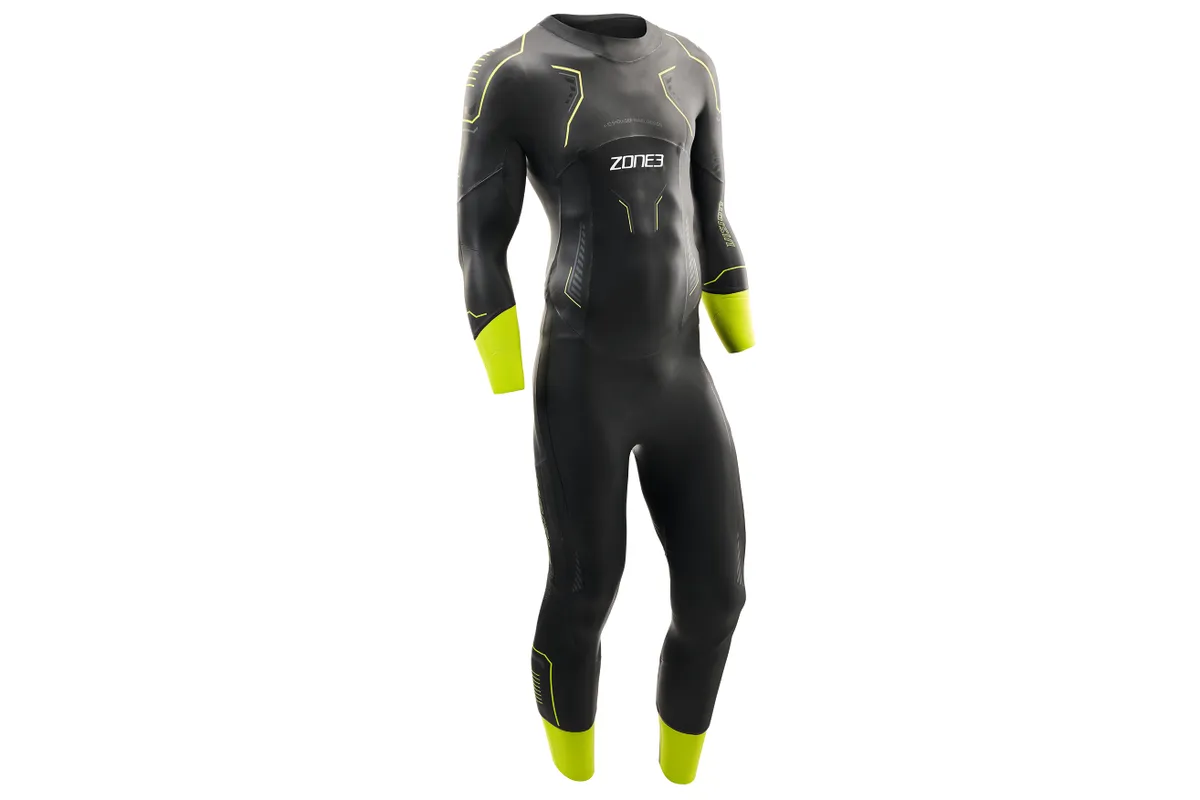
- £349 / $575
The Vision is a regular in our budget wetsuit tests, but a recent price jump sees it enter the mid-range collection from now on.
While the Vision can’t compete with the Aqua Sphere in terms of feel and flexibility, and the 2mm shoulder panels are noticeably less supple than the 1.5mm used elsewhere, the loftier company does reinforce just what a good value suit this is.
There’s top-draw tech such as 39-cell Yamamoto neoprene, SCS coating for hydrodynamics and an environmental boost with a limestone-derived (over petroleum) construction, along with race-friendly features like arm and leg cuffs for easy removal.
Buoyancy is reasonably high due to the 5mm thicknesses of neoprene and Aerodome air bubbles between the layers, and warmth in the 10°C water was the best of the bunch.
Verdict: Not outdone by the pricier suits and an entry/mid-level winner.
Score: 86%
Huub Varman
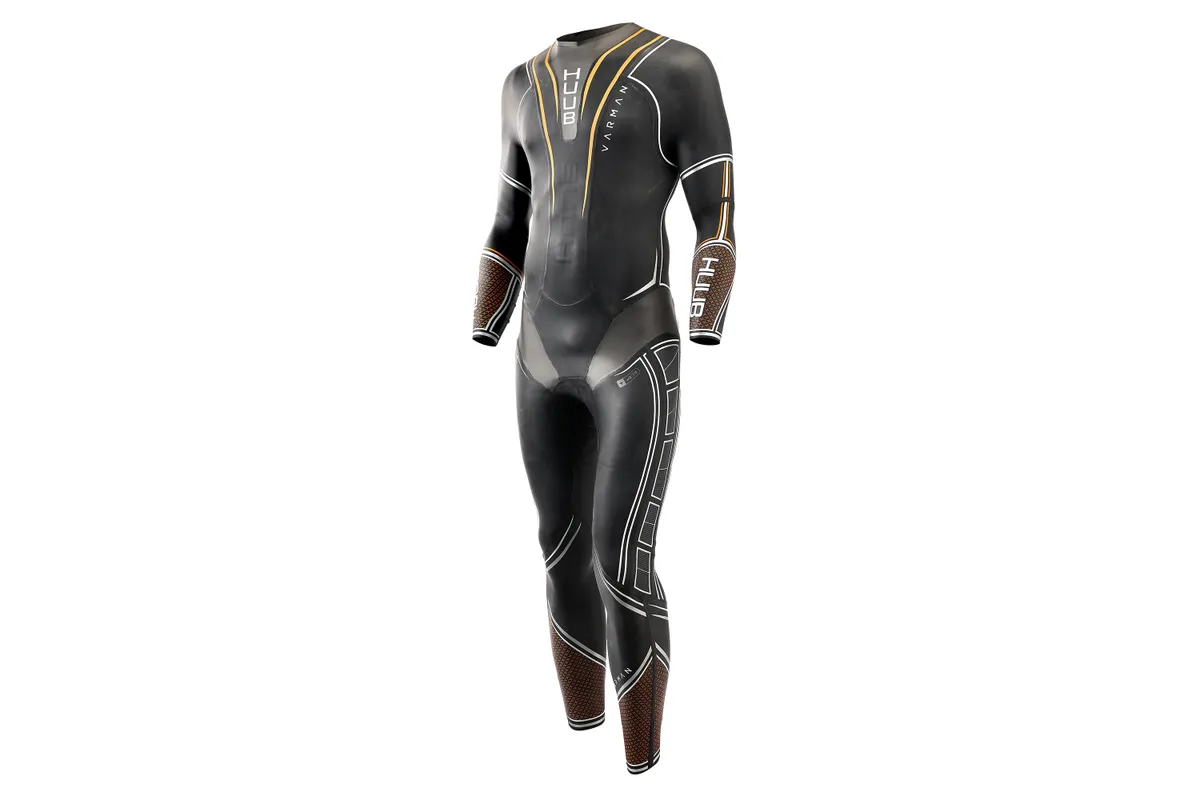
- £599 / $799
The clever folk at Huub rarely rest on their laurels and, with the Varman, they believe they’ve launched a revolution in wetsuit development.
With their trademark 43 system, Huub claim to have a material that offers 43% more buoyancy than standard neoprene. Testing certainly backs up the theory with plenty of uplift around the hips.
The thinner panels, especially around the arms, meant there was no real restriction of the stroke. Huub’s team have created an ‘Arms Neutral’ design that delivers on its promise to allow freedom and rotational movement.
The only criticism is that the neck was a little tight out of the water, but less of an issue once swimming. An interesting suit with the potential to shake up the market.
Verdict: New tech has produced a good wetsuit but with a big mid-range price tag.
Score: 91%
Zoot Kona
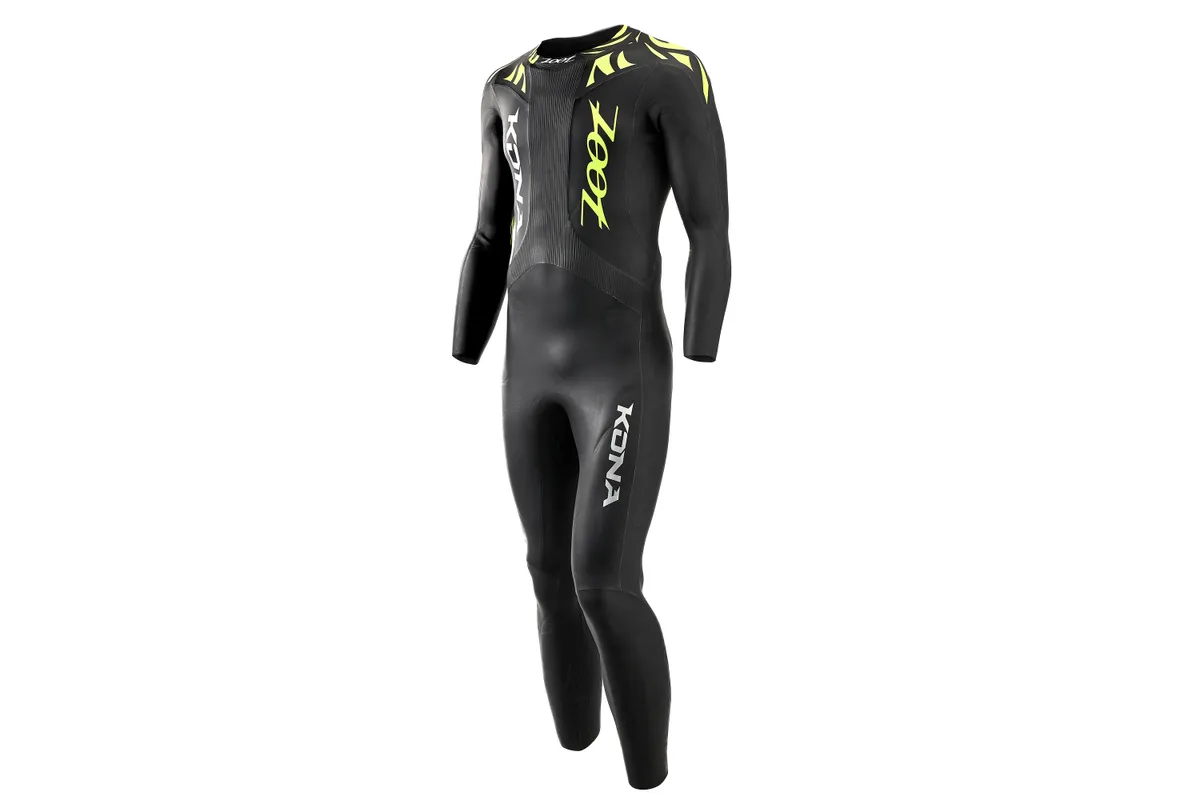
- £315 / $330
Zoot has tried to pack as many features of their high-end wetsuits as they can into the Kona and reduce the cost, and it’s fairly successful. The most notable feature is the GLIDEflex grooved panel in the chest.
Zoot has developed the feature to allow full expansion of the lungs while swimming, particularly important when getting going in those anxious moments at the start of a triathlon.
That proved true on test, but it’s arguable whether it felt that much different from the other suits here. The AQUAlift buoyancy tech worked effectively, with the suit providing significant uplift in the hips.
The Kona wetsuit had a more conventional fit, possibly due to the price tag, and there was a little more water ingress than some others on test (but not so much it was a cause for concern).
Verdict: Not the most premium suit here but delivers highly on value for money.
Score: 85%
Huub Albacore II
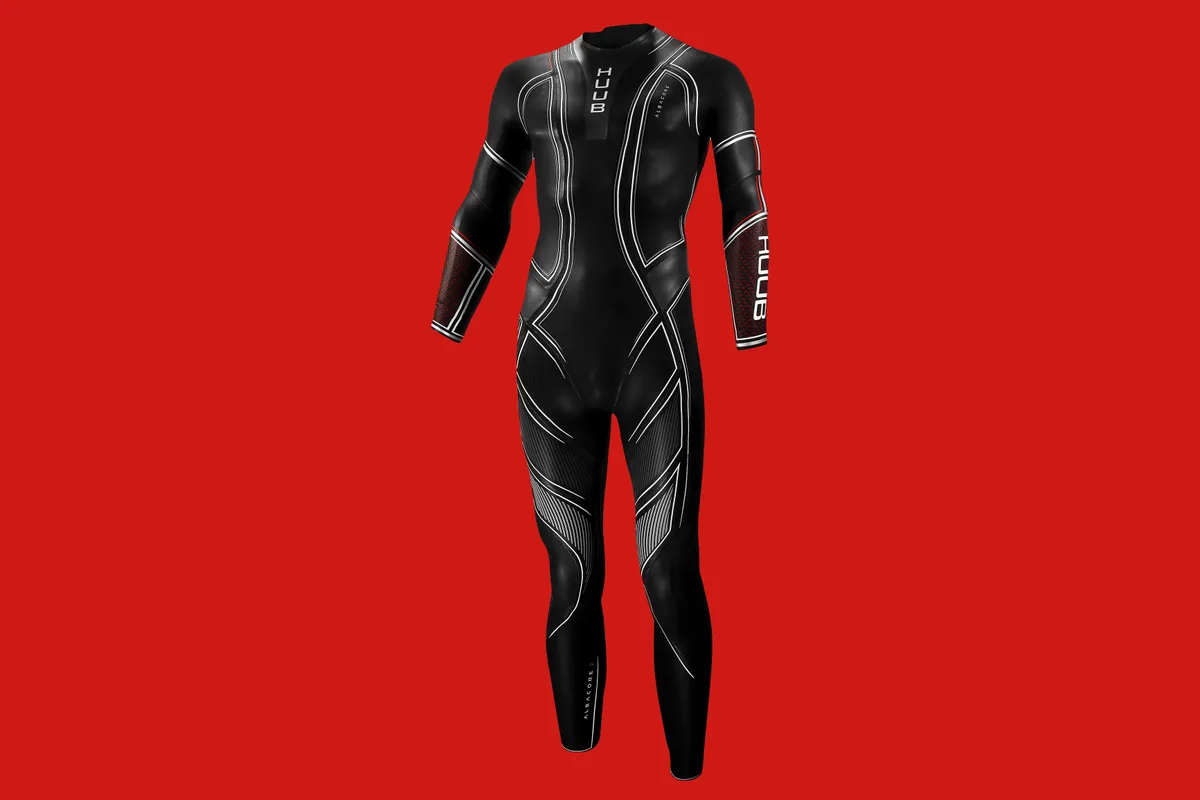
- £699 / $899
This is the updated model of the original Albacore, and it’s made of 80% neoprene plus a combination of nylon, metallic fibre and cotton. When we unzipped it for the first time, the zipper became stuck at the bottom.
Yet, having watched Huub’s video of their Breakaway Zipper system, the mystery was solved. The reverse zipper feels counterintuitive but, when you get it right, it opens swiftly and you soon have the top of the wetsuit already halfway down your chest.
Also worth noting is that the material becomes more forgiving after some test swims, and once in the water over 3.8km at Ironman Estonia, the Albacore II felt incredibly comfortable, buoyant and stretchy on the shoulders. A top-notch suit.
Verdict: Initial zipper concerns give way to a comfy, buoyant wonder.
Score: 90%
Best top-end triathlon wetsuits reviewed
As you’re eyeing up a wetsuit from this selection, it’s likely you’ll either have a swim background from your youth, or have worked hard in adulthood to hone your skills and are emerging from the swim placed inside the top 10% in the majority of your triathlon events.
Here's our reviews of the best triathlon wetsuits money can buy...
Zone3 Vanquish X
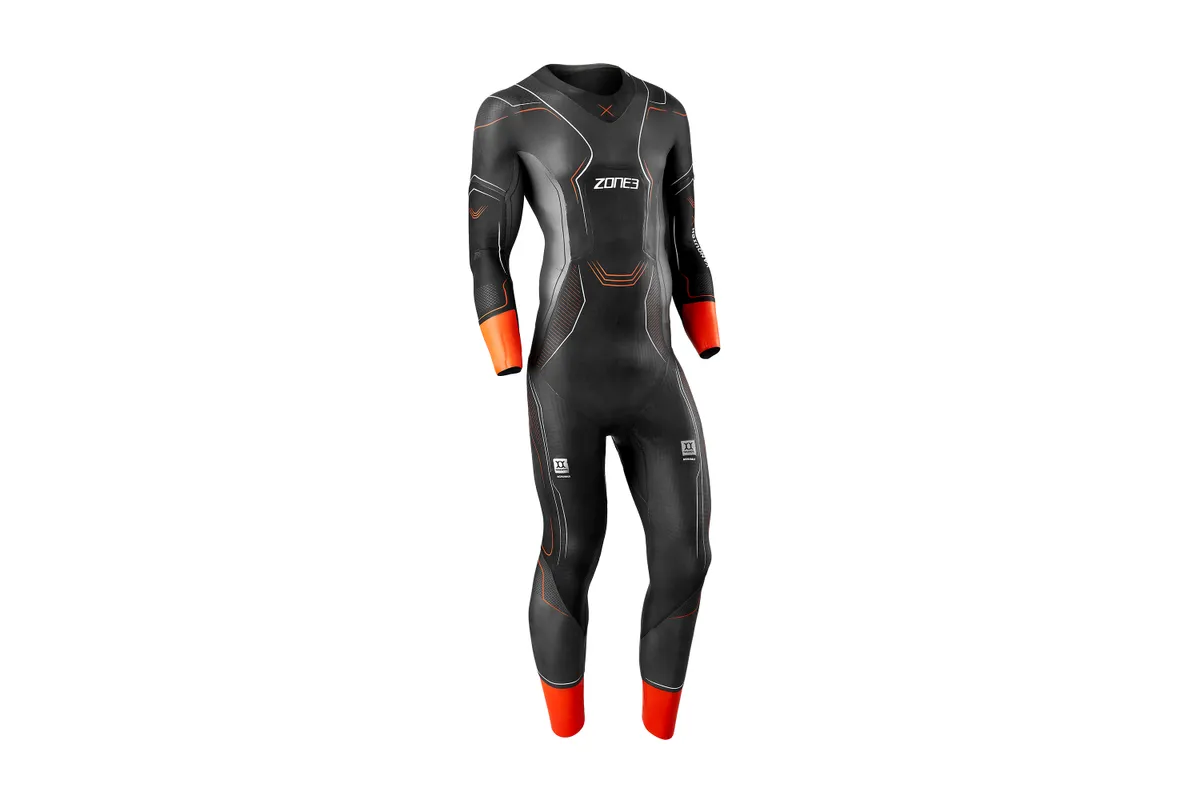
- £699 / $995
The Vanquish X is an evolution of Zone3’s popular Vanquish, featuring sparkly new tech such as its Titanium Alpha structure that adds a titanium alloy coating to the neoprene to improve warmth by a claimed 40%.
This won’t affect flexibility, says Zone3, and our swim experience supported that claim.
There's an impressive 11 different materials used in the construction of this suit, ranging from 0.3mm on the arms to 5mm in the core and upper legs.
Intriguingly, there's no difference between the buoyancy profiles for the men's and women's version, so our female tester felt particularly buoyant – potentially a little too much so.
The neckline is a little deeper with a more refined shape than the Vanquish, which made for a chafe-free swim. We’ve always appreciated the lining in Zone3 wetsuits, and the new Silk X lining here is no different, proving to be silky smooth against the skin as the name suggests.
We think the improvements are more evolutionary than revolutionary compared to the Vanquish, though, maintaining similar characteristics but with a sizeable price hike.
Verdict: Solid all-rounder with great tri-specific features. See our full Zone3 Vanquish X review for more.
Score: 88%
Orca Apex Flow
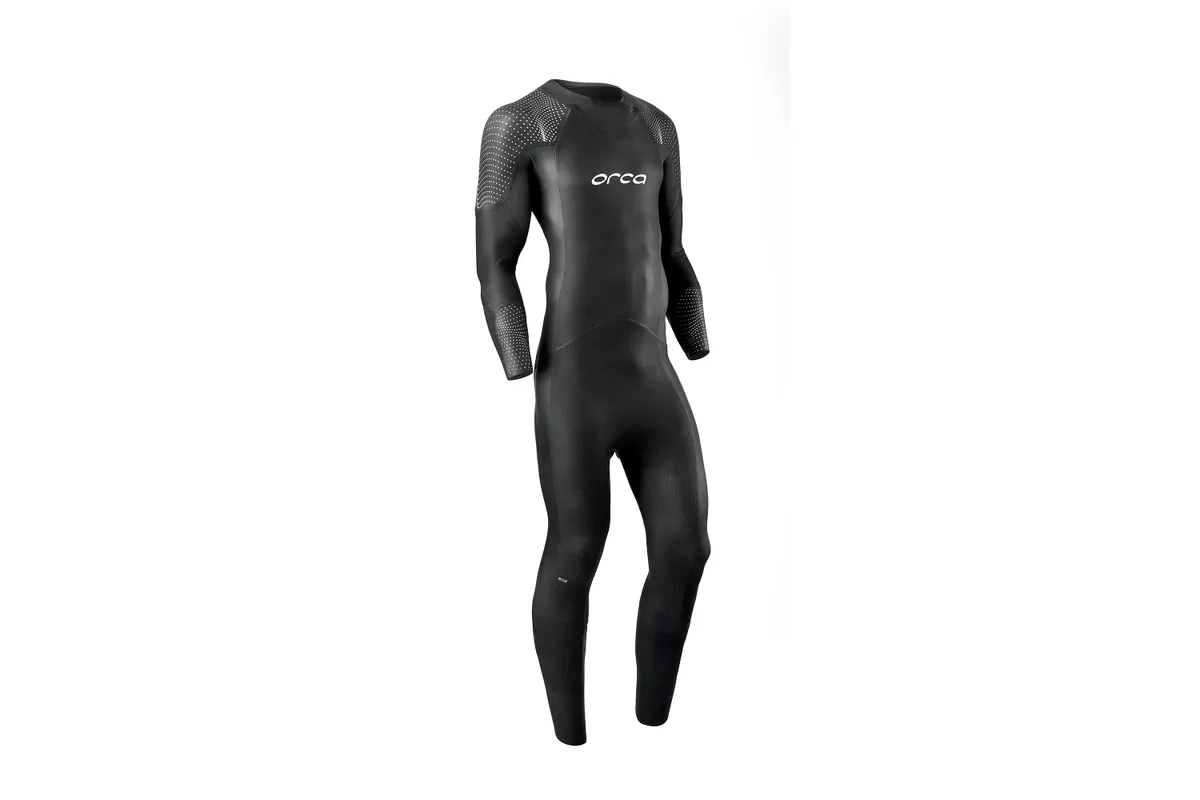
- £719 / $975
Orca has revamped its range for 2022, with the Apex Flow directly replacing the Predator. The Flow range is recommended for stronger swimmers with some technical imperfections who want more lift, while the Apex Flex (replacing the outgoing Alpha) is best for the teacher’s pet in your swimming group.
Of all suits on test, this one felt the most like a second skin as soon as we put it on, offering complete freedom of movement to support our swim stroke.
The neckline is super comfortable and it just feels buttery smooth, with Orca’s Exo-Lift and Aerodome technologies providing plenty of buoyancy in the legs and lower body without feeling bulky or lifting us too much.
The only real reason the Apex Flow loses marks is the high price compared to rivals; but if you’re seriously competitive and want freedom with plenty of added buoyancy, it’s the cream of the crop in this group test.
Verdict: Sublime flexibility, comfort and buoyancy combined with a touch of leg lift to aid position.
Score: 92%
Huub Pinnacle
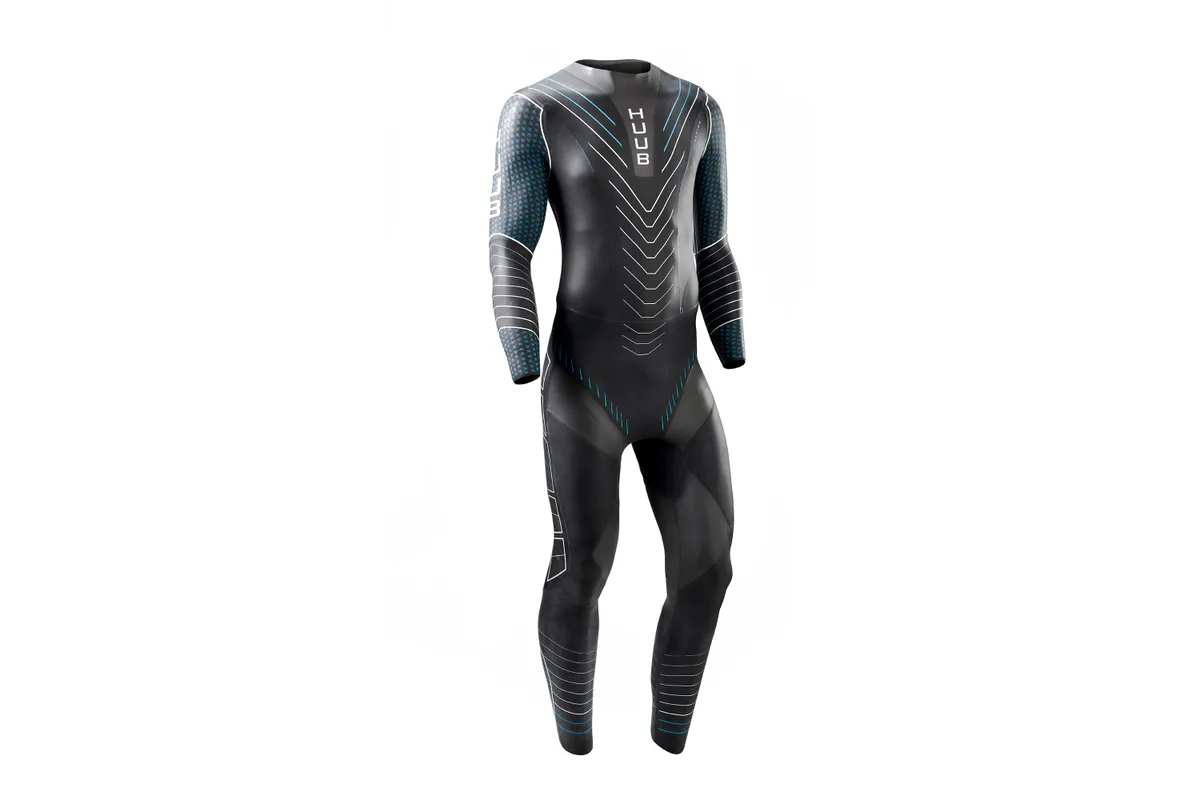
- £599.99
Developed with Andy Potts, Huub describes the Pinnacle as a suit that “corrects more failings than any other”, which means features that help address sinky legs and snaking, plus the addition of Huub’s Core Control system to keep you stable and straight through the water.
It adds up to a suit that feels more heavy-duty and not quite as flexible overall as Huub’s Brownlee Agilis, with thick buoyancy panels in the legs and tight neoprene at the hips to keep that core stable.
It took a couple of swims to truly break the Pinnacle in, but when we had, the feeling in the arms and shoulders was unrestrictive.
The neckline isn’t the most comfortable and required some extra antichafe balm compared to some others on test, but once applied it was perfectly manageable for long swims. If you’re a strong swimmer but still need a bit of an extra lift, the Pinnacle is a solid choice.
Verdict: A suit rich in features to correct your technique, one for those looking for extra buoyancy.
Score: 84%
Sailfish Ultimate IPS Plus 3
- Buy for women from Swim Inn (£725.49)
- Buy for men from Swim Inn (£685.99)
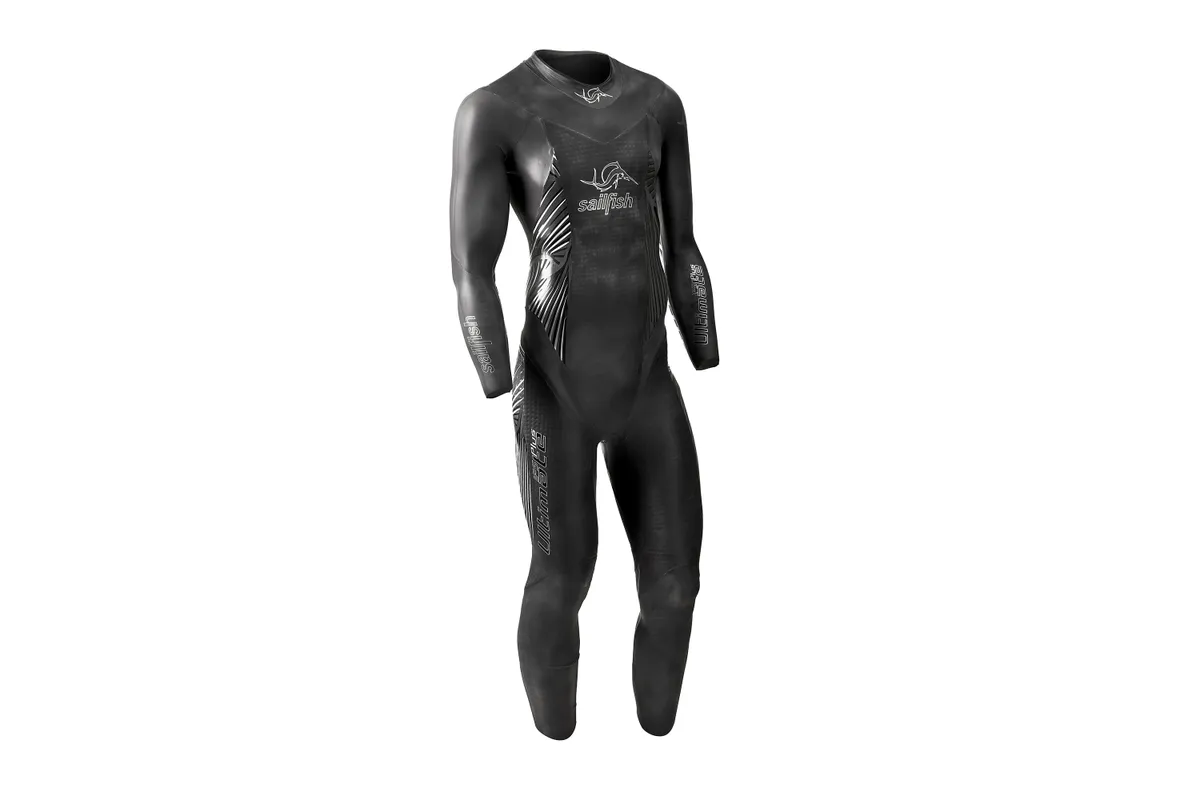
- £925 / $1,050
The Ultimate IPS from Sailfish was last tested in this mag in 2022. This version added a new Hip Rotation Panel to help with hip flexibility and generate a more powerful kick.
Combined with a very stretchy liner and 4.5mm buoyancy in the chest, hips and thighs with a 1.5mm arm thickness, it’s aimed at faster swimmers who want maximum mobility to support their technique.
This is a suit that really works with you and feels incredibly flexible in the shoulders, and the buoyancy levels, plus that extra freedom in the hips was ideal for this (male, strong swimmer) reviewer’s technique.
We felt powerful and efficient during long swims in the Ultimate IPS, and it would be ideal for very competitive iron-distance triathletes who are prepared to invest a little more in their suit.
Verdict: A classy suit ideal for those chasing marginal gains. High price, though.
Score: 85%
Quintana Roo Hydrosix2
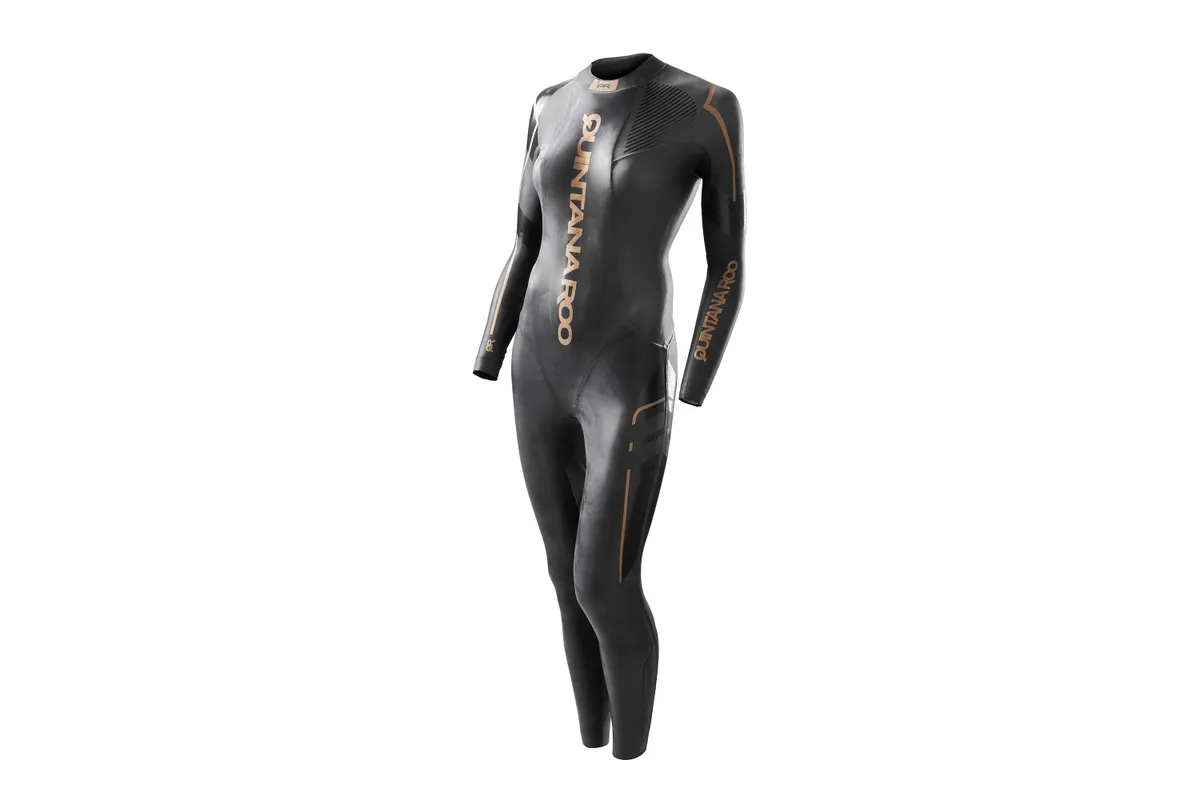
- £415 / $595
Proving that no two swimmers are the same and that the market needs to cater for everyone (and that’s a good thing), the Hydrosix2 could not be more different to the super-thin and stretchy Orca in this test.
With this suit, you get 5mm neoprene throughout the legs and core, which does make it feel thick and tricky to pull on. But once you are in water you get buoyancy like no other suit we’ve ever tried.
The design meant we didn’t need to kick at all, and if we did, our heels breached the water. So a bit much for this buoyant female tester, but heavier-legged and sinky triathletes will rejoice!
With premium materials, minimal seams and ‘superstretch’ 1.5mm neoprene in the upper-body, it offers refinement and flexibility.
Plus, the unisex-sizing is an interesting concept, but one that seems to work.
Verdict: The mix of upper-body flexibility and lower-body mega buoyancy will delight sinky folk.
Score: 83%
Orca Apex Flex
- Buy for women from Wetsuit Centre (£499.95)
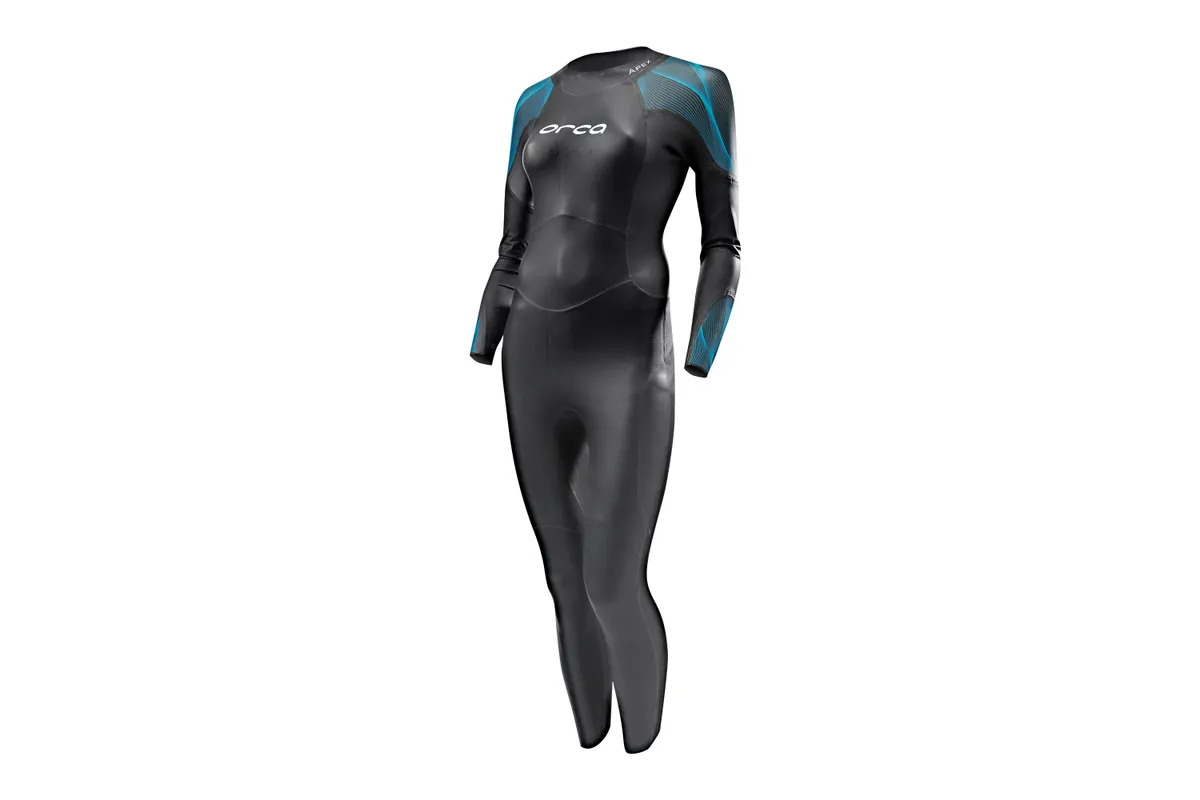
- £589 / $719
The Apex Flex joins the new Orca range as a direct replacement for our beloved Alpha – the wetsuit that has been our faithful companion through many seasons of openwater racing – so there were some nerves when we unboxed this new suit.
Thankfully though, Orca have taken a phenomenal suit and made it even better with the Apex Flex. Ridiculously soft, supple and flexible, this is a suit for top-drawer swimmers with good body position (see men’s test for the Apex Flow if you want lift), who want to feel unhindered by their kit.
Yamamoto 44 neoprene is used here to give that ultimate stretch, while Orca’s 0.88m technology on the arms gives a tissue-thin layer that is still warm enough for summer racing.
It isn’t a suit for the winter and you will want to be careful not to nick the neoprene, but for race day and an unrestricted swim feeling, this is the new suit to beat.
Verdict: Supple, comfortable and very easy for competent swimmers to race in - a gold-standard suit.
Score: 94%
Quintana Roo Hydrosix
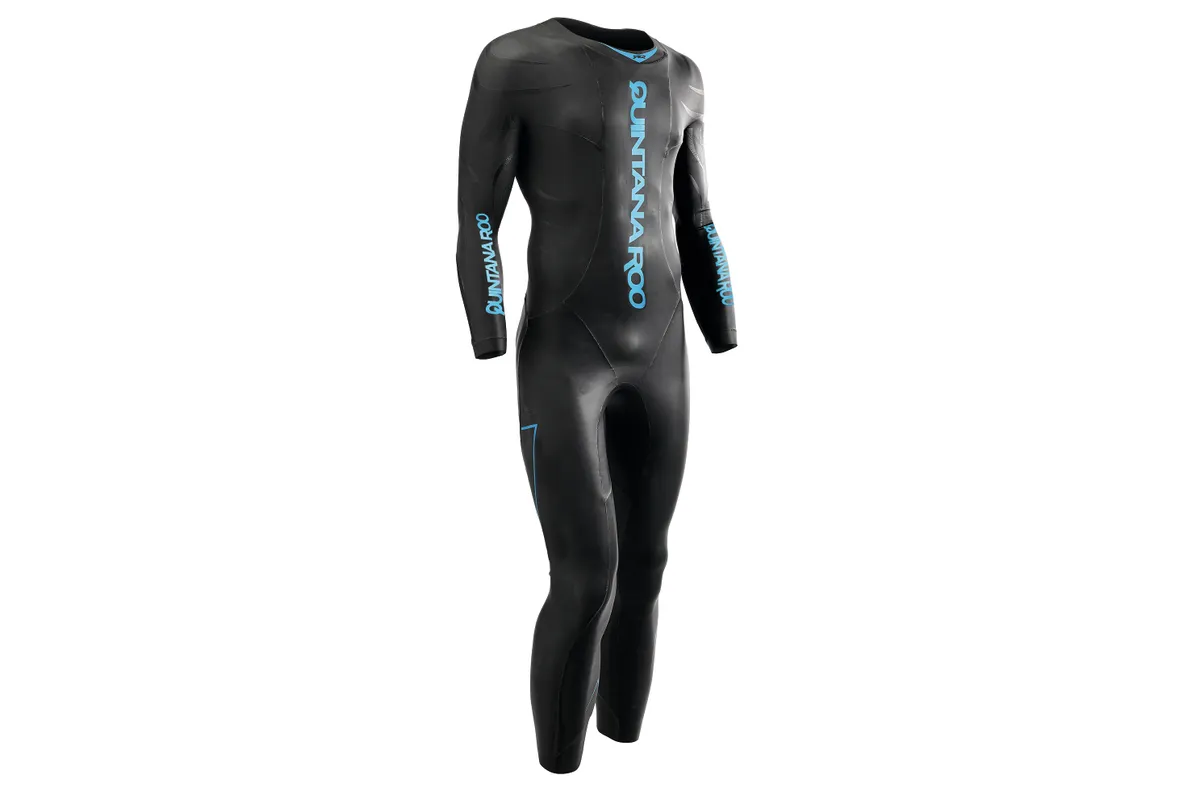
- £599.95 / $595
The HydroSix is pitched as a truly unrestrictive suit with extra stretchy materials and reduced seams to help you move and breathe more naturally through the water.
Quintana Roo has kept things simple with a mix of 39 and 40-cell Yamamoto neoprene and no extra buoyancy panels in the chest and legs, with the overall buoyancy profile feeling well balanced. Meanwhile, QR’s Catch and Feel Panels allow for a quick and efficient arm turnover.
However, we found the HydroSix more difficult to get off than the others on test, with the cuffs proving very stubborn. For a top-end suit, the price is about what you’d expect, but with 40% lopped off the RRP at the time of writing, the HydroSix could be a high-end bargain.
Verdict: Well-balanced buoyancy and comfortable to swim in, but tricky to get off.
Score: 78%
Yonda Ghost 3
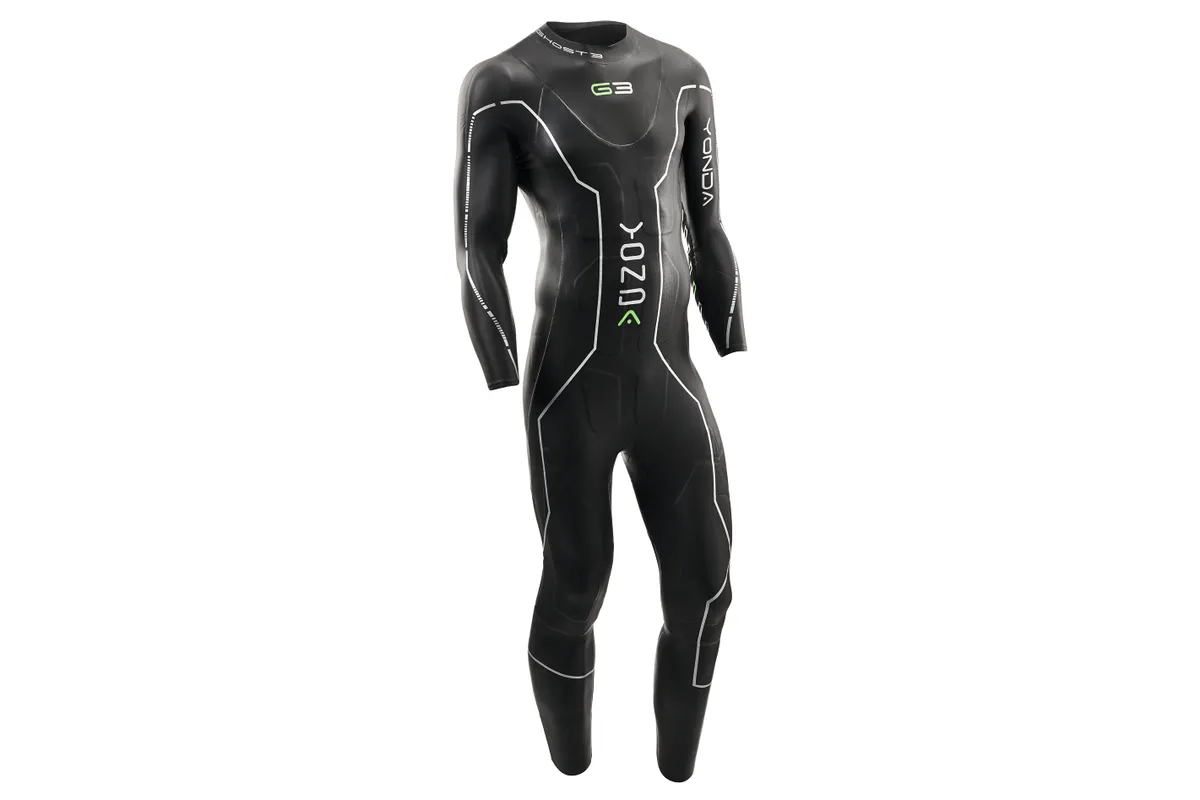
- £589 / $747
The Ghost 3 has been a firm favourite on these pages, taking the ‘best on test’ accolade in our men’s test in 2021 and scoring highly again in its last appearance in 2022.
With the spec remaining unchanged since that review, how does it fair now? Well, this is still undoubtedly a superb wetsuit.
The combination of 1.5mm neoprene in the shoulders, and 4.5mm in the core to give lift and control, worked really well for our male tester.
Meanwhile, the silky lining felt premium quality and was easy to pull off in transition. For our curvier-thighed female tester, the thin inner-thigh panels gave us concerns about longevity, but they did offer flexibility of movement, which many will welcome.
A reverse zipper is a race-specific addition, added to stop competitors tugging on your zip!
Verdict: Still a top-end suit featuring some superb tech for top-end swimmers.
Score: 91%
Zoot Bolt
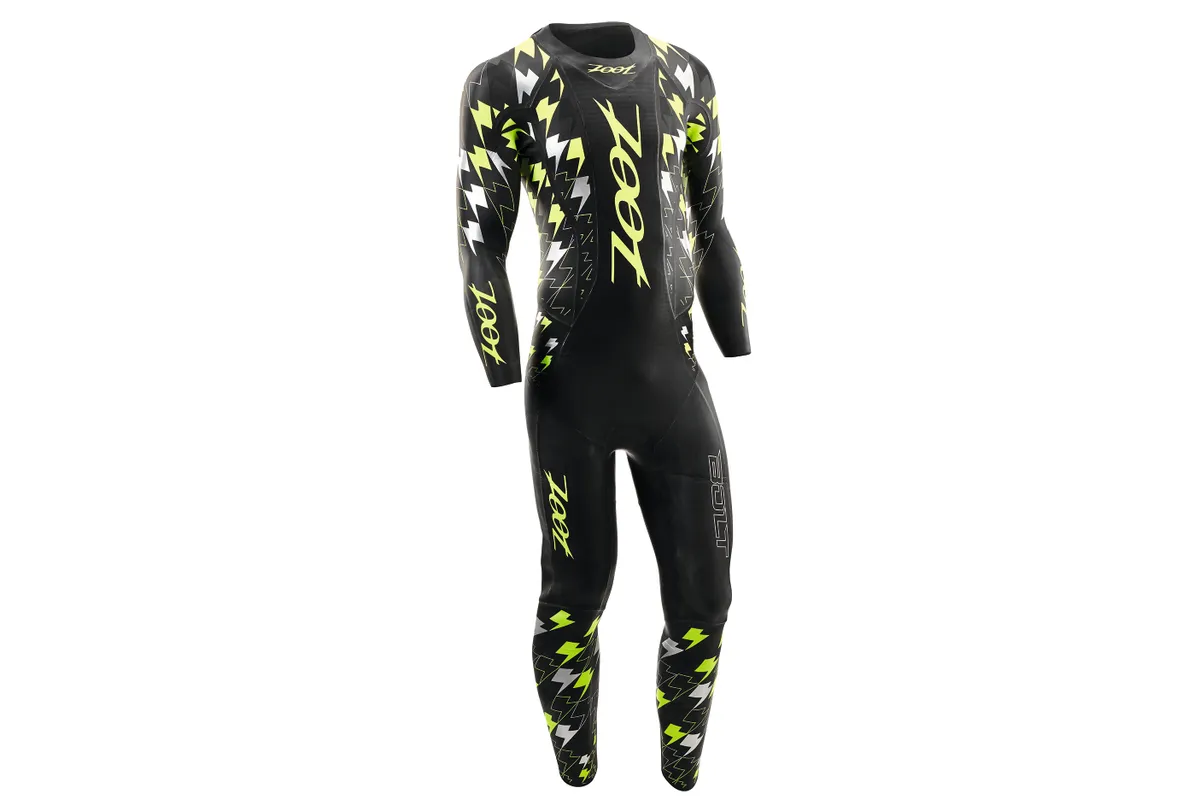
- £525 / $550
Zoot’s Bolt is aimed at the triathlete ‘who doesn’t have ideal swimming technique’, with the 5mm panels in the chest and upper legs and use of 39-cell Yamamoto neoprene resulting in a robust build.
While not as flexible in the arms and shoulders compared to Yonda and Huub’s offerings, Zoot’s target triathlete will appreciate the Aerodome’s buoyancy.
To prevent that choking feeling when you zip up, there’s 2mm of neoprene around the back zipper for extra stretch and less restriction. It came off fast thanks to the brand’s speccing of smooth nylon textiles inside, and the neckline didn’t irritate us. While it’s not this tester’s suit of choice, it will appeal to those who want more buoyancy and stability.
Verdict: A solid choice for mid-pack swimmers with cash to spend.
Score: 76%
Roka Maverick Pro II
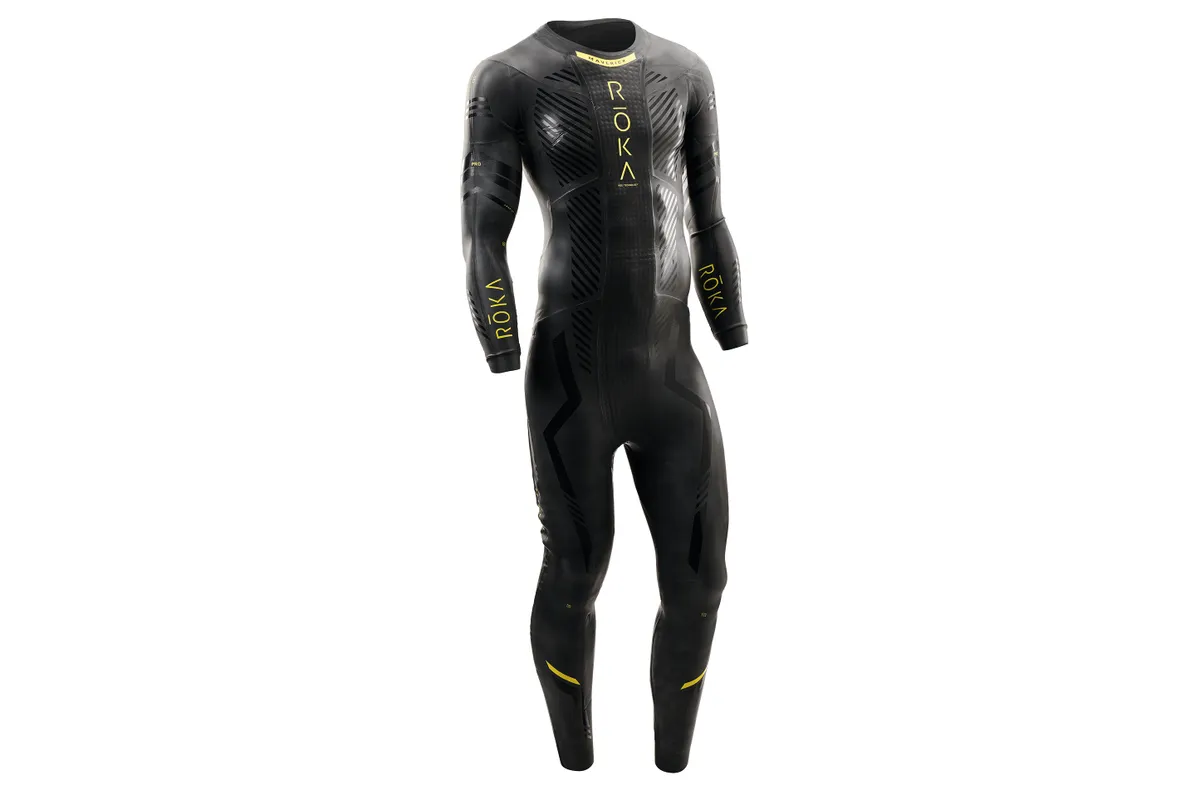
- £775 / $845
The Maverick Pro II is actually second to the Maverick X2 (a whopping £975) in Roka’s wetsuit range, but nearly all of the tech trickles down.
We’re fans of Roka’s arms-up construction that patterns the suit with the model’s arms above the head, and it shows in the near elimination of shoulder restriction.
There’s also extra neoprene down the centreline to stop you from rotating too much, which results in a smooth swimming experience.
Roka says the suit’s ‘neck suspension’ reduces seams and improves neck comfort, but we found that it rubbed the side of our neck a little. While we’ve no big criticisms of the Maverick Pro II, we felt it didn’t do its job any better than the other high-end suits on test, despite its premium price.
Verdict: Almost zero shoulder restriction, but still failed to really wow us for the price.
Score: 80%
Huub Brownlee Agilis
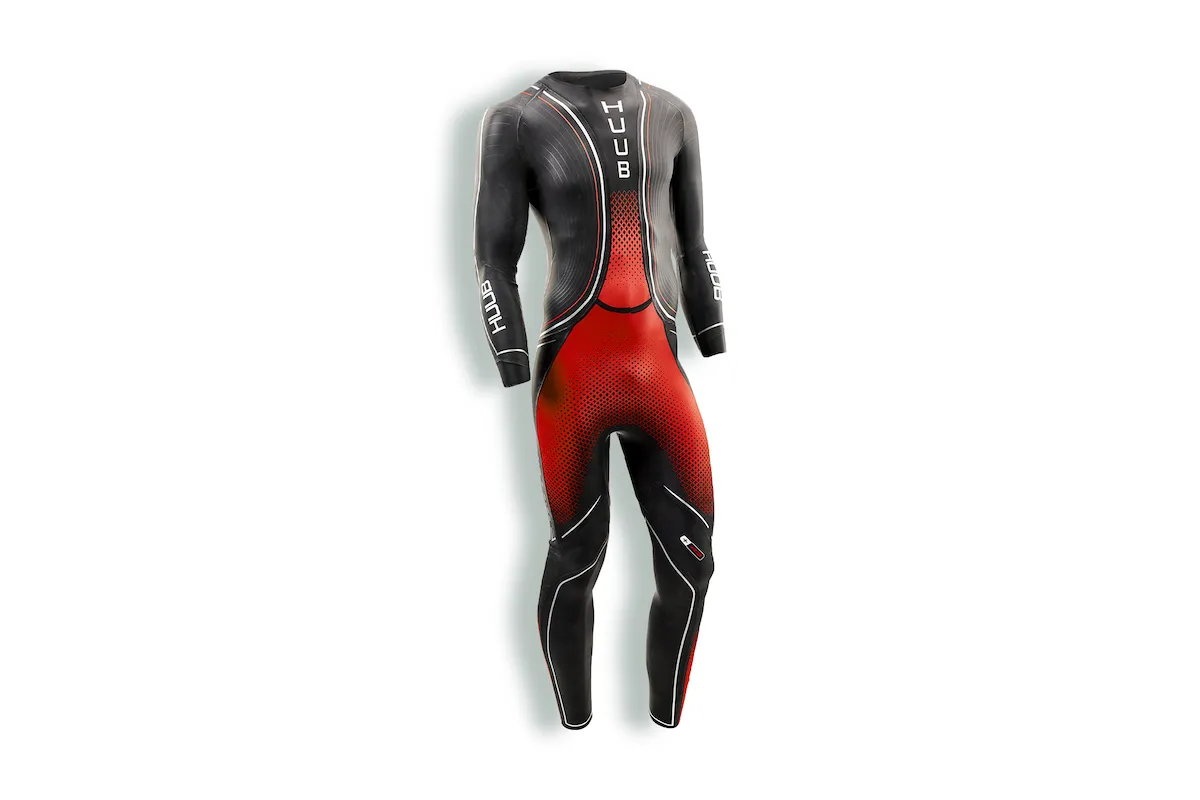
- £749.99 / $999
The Brownlee Agilis wetsuit has been part of Huub's range for a few years now, but this year two new colourways have been launched, including red (for men), pictured here, and coral (for women).
Our male tester said: "This is a hugely supple and flexible wetsuit that really moves with you through each arm stroke thanks to Huub’s ‘Arms Neutral’ tech."
The buoyancy profile is 3:5 in the male suit and 3:3 in the female. Testing the latter, 220 Editor Helen Webster said that the combination of flexible arms and support through the core and lower body made long-distance swimming feel much less tiresome than many competitors.
Sinky-legged swimmers will also appreciate the brand’s 43 buoyancy foam found in the core and thighs, which also helps with rotation.
We’ve praised the Brownlee Agilis before, and it’s continued to grow on us. Our only gripe is that it’s so delicate.
See our full Huub Brownlee Agilis wetsuit review for more.
Verdict: Stunning flexibility with looks to match; still one of our favourite suits to swim in.
Score: 91%
2XU Propel Pro
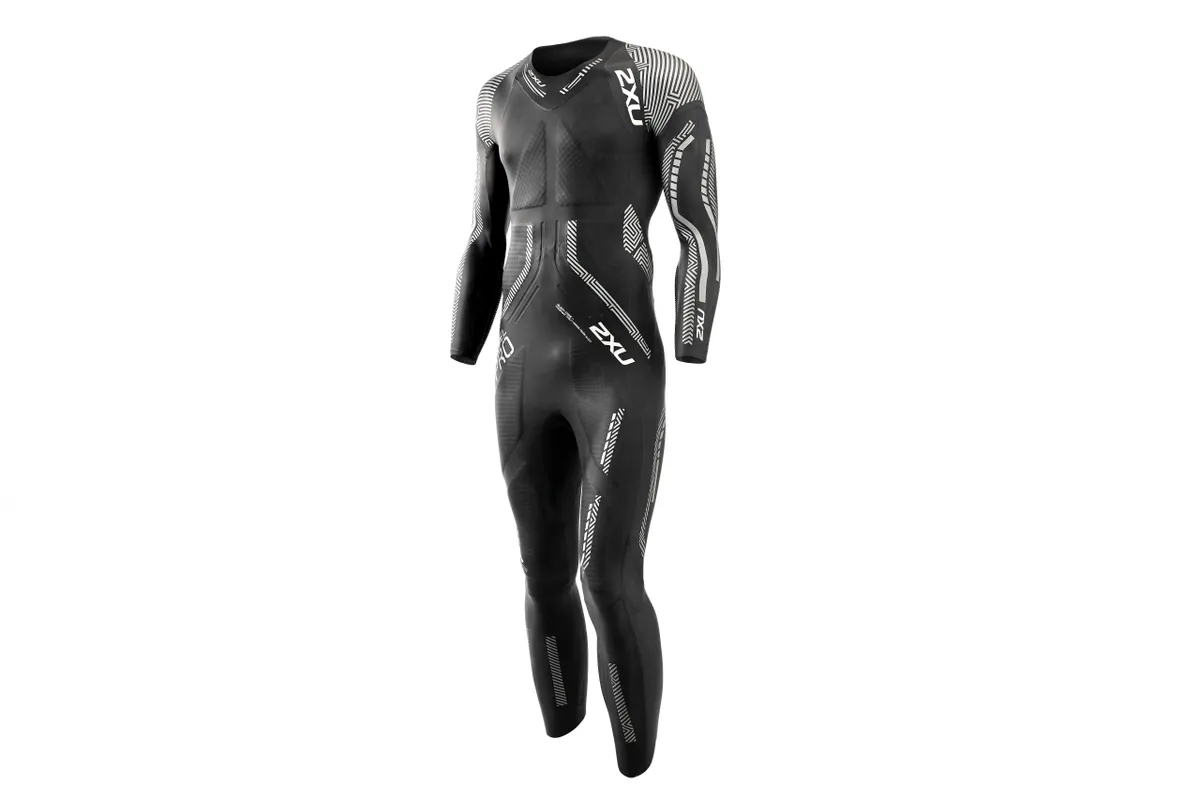
- £600 / $799
2XU’s top-of-the-range Propel Pro has proved a favourite of both our male and female testers recently, and nothing's changed yet.
Featuring Yamamoto’s 45-cell neoprene, which 2XU claim is the most flexible in the world, this tester finds the suit almost unrivalled for freedom of movement.
Strong swimmers who want a natural swimming experience to support their technique should get on instantly with the Propel Pro due to the flexibility and, while it’s not the most buoyant on the market in the legs, the blend of 2mm and 3mm leg panels will do more than enough to support your kick without putting you too high up in the water.
The ‘Concave Water Entrapment Zone’ – essentially a jagged section on the back of the forearms – is said to offer extra strength through the pull phase, and additional panels offer more lower-leg propulsion.
Verdict: An incredibly flexible suit that sets the standard for other high-end suits to follow.
Score: 92%
Deboer Floh 1.0
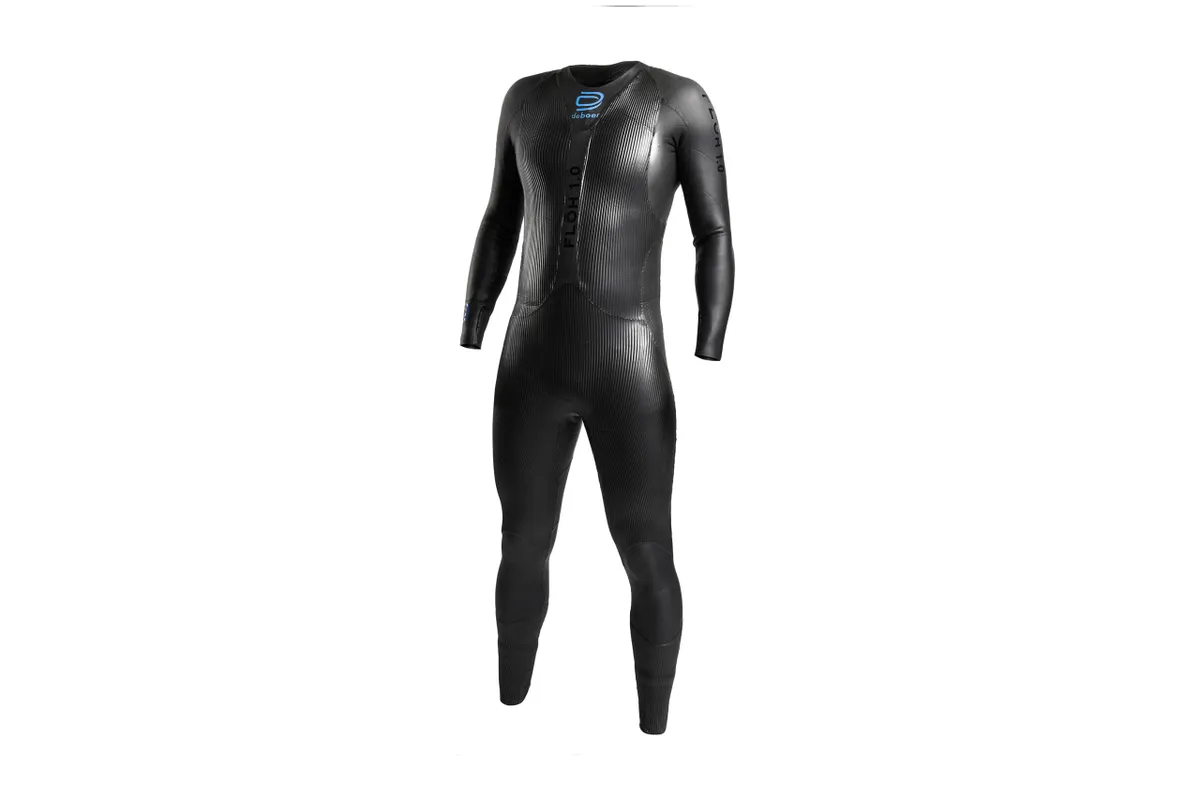
- £1,250
With Jan Frodeno and Daniela Ryf switching to Deboer, are there any pro endorsements that could make you drop £1,250 on a wetsuit? Deboer make a strong case, with their limestone-based ‘Whaleskin’ neoprene said to be 20% lighter than oil-based neoprene to make it extremely buoyant.
The Floh is recommended for colder water down to 12°C (their Fjord is for warmer water) and has Deboer’s Ultraflex 1.5mm neoprene arms.
The high stretch made putting it on easy, and a polymer treatment prevents rips. A large flap over the zipper keeps the cord tucked away, and while the neck looks jagged and almost unfinished, Deboer say this is because each suit is handmade.
It netted us quick swim splits, with no shoulder fatigue after long sets. Yet it didn’t feel markedly better or worse than the other suits here.
Verdict: An enormous price tag that feels very hard to justify for us mere mortal triathletes.
Score: 71%
Zone3 Vanquish
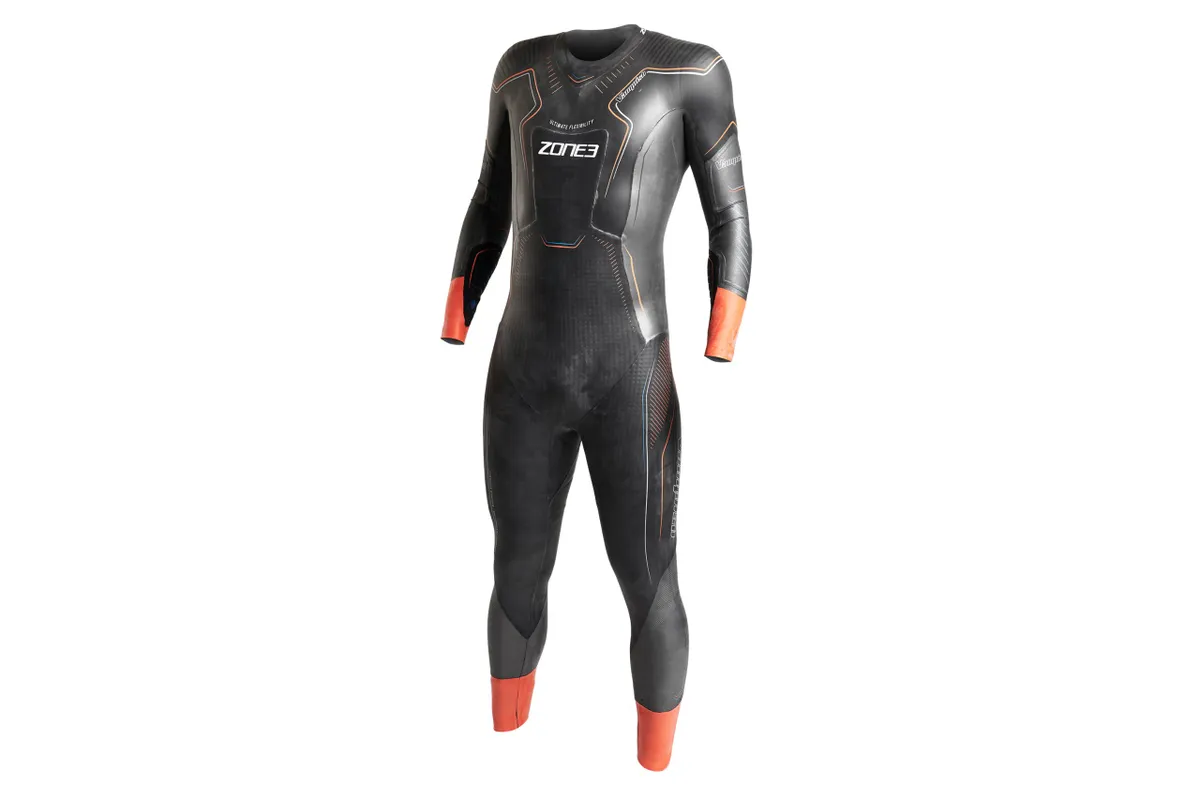
- £699 / $995
With ‘ultimate flexibility’ proudly printed on the front, Zone3 present their Vanquish as the suit to turn to if you want superior movement.
It has a comfortable inner lining and neck line, which is ideal for Ironman, and the ‘Aerodome’ material on the legs has air bubbles between the fabric that Zone3 claim make it 30% more buoyant than standard neoprene.
The arm panels feature Yamamoto BRS SCS material that is just 0.3mm, claimed to be the thinnest neoprene in the word.
While we found it delicate and couldn’t help being quite cautious when taking it off at speed in a T1 mock-up, through the water the reduced weight and heightened feeling undoubtedly reduce arm fatigue.
While it didn’t feel quite as unrestrictive as some of the competition in the shoulders, the Vanquish is up there with the best.
Verdict: Impressive tech and flexibility, if a little delicate on the arms.
Score: 86%
Blueseventy Helix
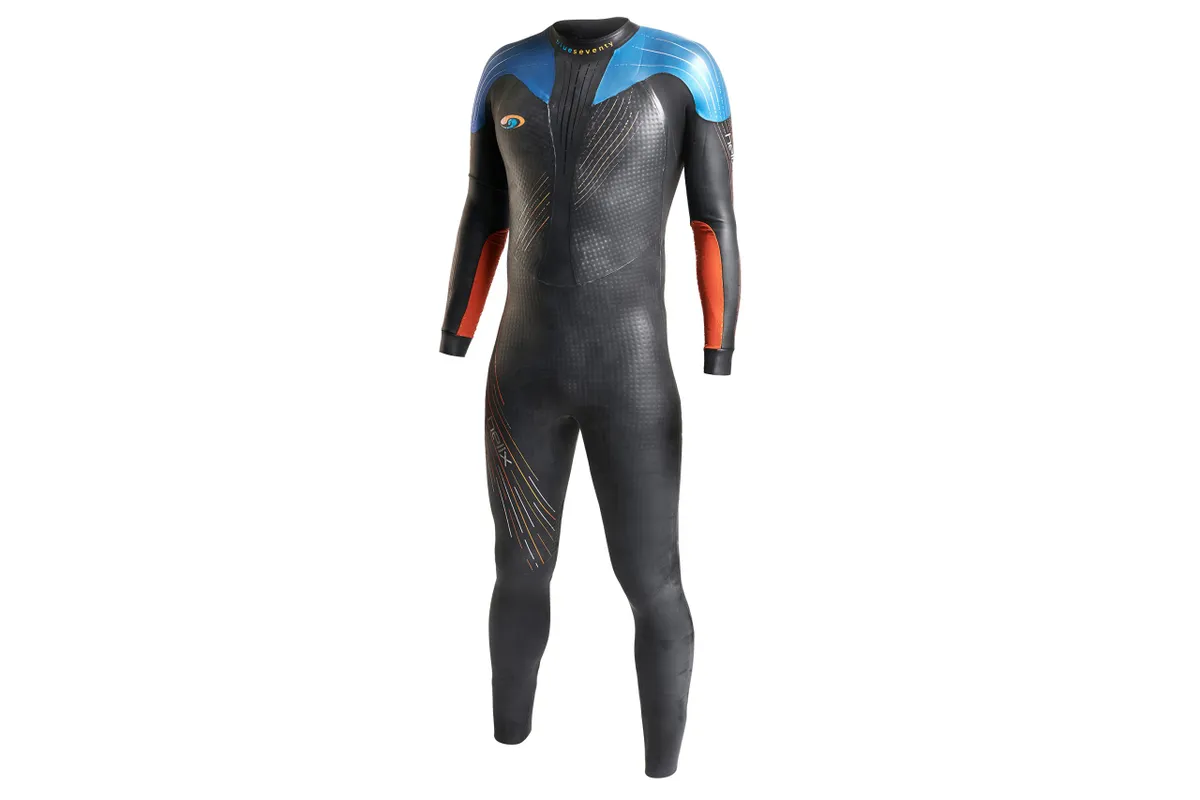
- £715 / $920
Unchanged for 2020, the sixth iteration of Blueseventy’s Helix is still one of the best suits around, with numerous technical features that justify its sizeable price tag.
The 1.5mm shoulder panels and thin 40-cell Yamamoto neoprene in the arms make for a smooth and unrestricted swimming experience, while Blueseventy claim the ‘L.I.F.T’ panels on the back of the legs made of NBR foam give you an extra lift when your legs start dragging.
They go as far as to call it a ‘downhill’ swimming position and, while we’d consider this a slight exaggeration, the Helix feels impressively buoyant for a top-end suit.
A top-down breakaway zipper and 2mm lower leg panels that flare out at the ankle ensure the Helix can be removed quickly in T1. The neck lining is thicker than the other suits on test, though, and can irritate on very long swims.
Verdict: The original modern high-performance wetsuit is still the business.
Score: 88%
Zone3 Aspire Thermal
- Buy for men from Tiso (£227.50), Snow Rock (£318.75)
- Buy for women from Tiso (£227.50), Snow Rock (£318.75)
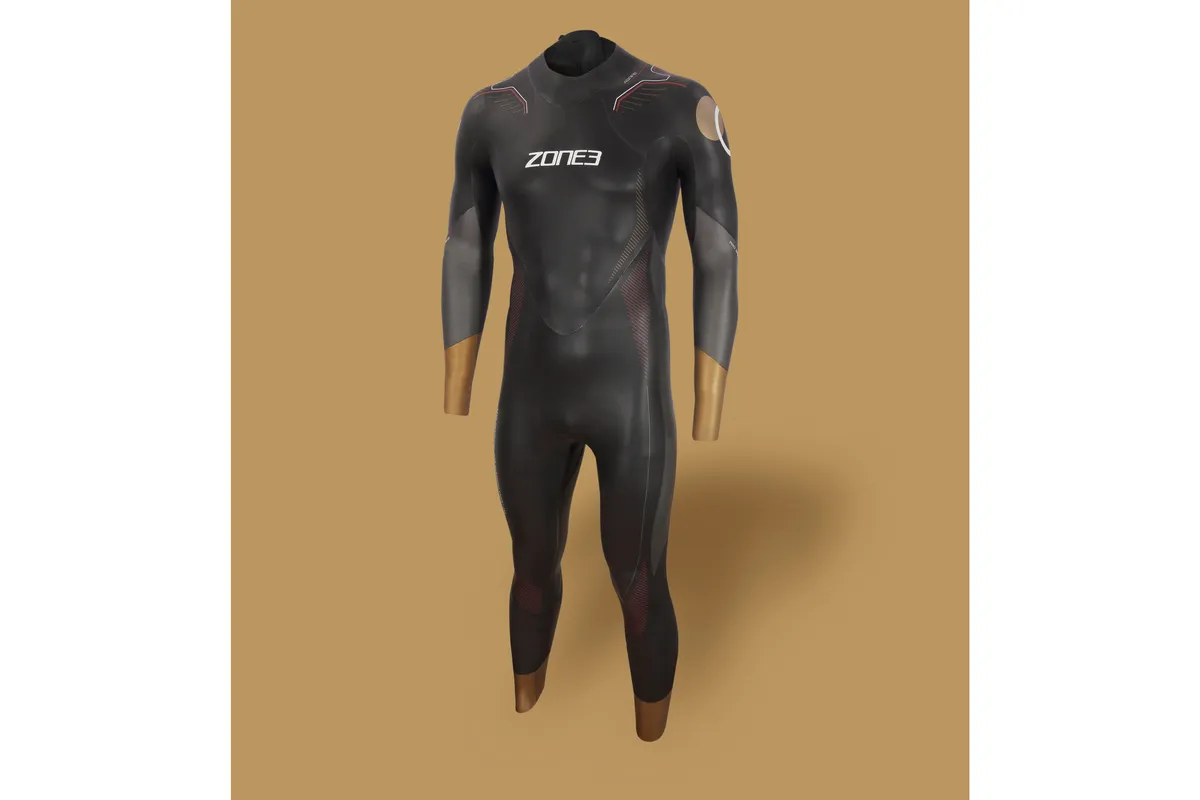
- £499 / $795
The Aspire Thermal is a warmer version of Zone3’s popular mid-range Aspire wetsuit. For an extra £50 more than the regular Aspire, you get Zone3’s Heat-Tech fleece lining, constructed to maintain body heat around key muscles and organs.
The collar, chest panel, arms and legs have been modified to increase warmth, while it retains features such as Zone3’s Pro Speed Cuffs for swift removal and a SCS Nano coating to reduce drag.
In bone-chilling 6.5°C waters, we weren’t expecting miracles as the suit is best recommended for water temps between 10-18°C, but we noticed our midriff was discernibly warmer than when we’ve swum in regular wetsuits in very cold water.
While 2mm arm and shoulder panels aren’t going to offer the flex of a high-end regular suit with rubber half as thick, sacrificing fractions of seconds during start-line sprints won’t be a deal breaker for many. The blend of 4mm and 5mm neoprene on the chest, leg and body panels give more than enough buoyancy.
For a mid-range thermal suit it’s priced fairly and it did a fine job of keeping us warm(er) than a standard tri wetsuit.
If you struggle in the cold and/or do all your events in the UK, this could be the only wetsuit you need.
Verdict: Impressively light and flexible for a thermal suit, and warm in bracing waters, too.
Score: 88%
Take a look at our best thermal wetsuits article for more reviews.
How we tested and reviewed the triathlon wetsuits
Our team of experienced triathletes and gear reviewers tested these suits in the UK in both lakes and the sea. The latter especially allowing us to access how the suits dealt with colder seawater temps, dealing with waves and currents to judge their race-day form (and water ingress).
Each was tested for comfort, performance, buoyancy, durability, hydrodynamics, zipper, removal speed, budget and the visual design.
Any wetsuit that scored 90% and above is a market-leading product, while those scoring between 80-90% are also deemed to be impressive.
Wetsuits scoring between 70-80% offer good performance, as long as the highlighted flaws aren't much of an issue for you. Products scoring below 70% can still be worth considering if the price is right, but don't come highly recommended.
